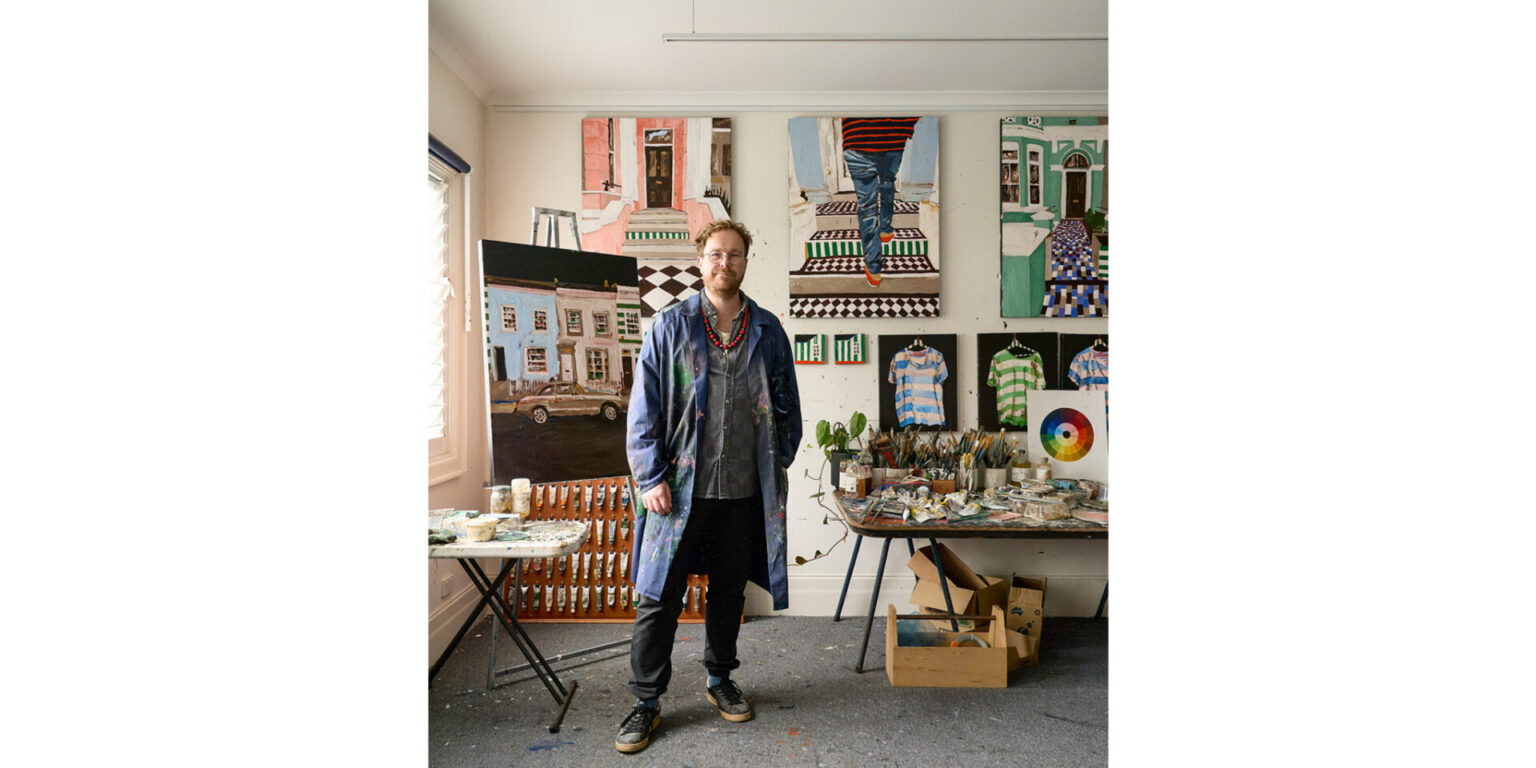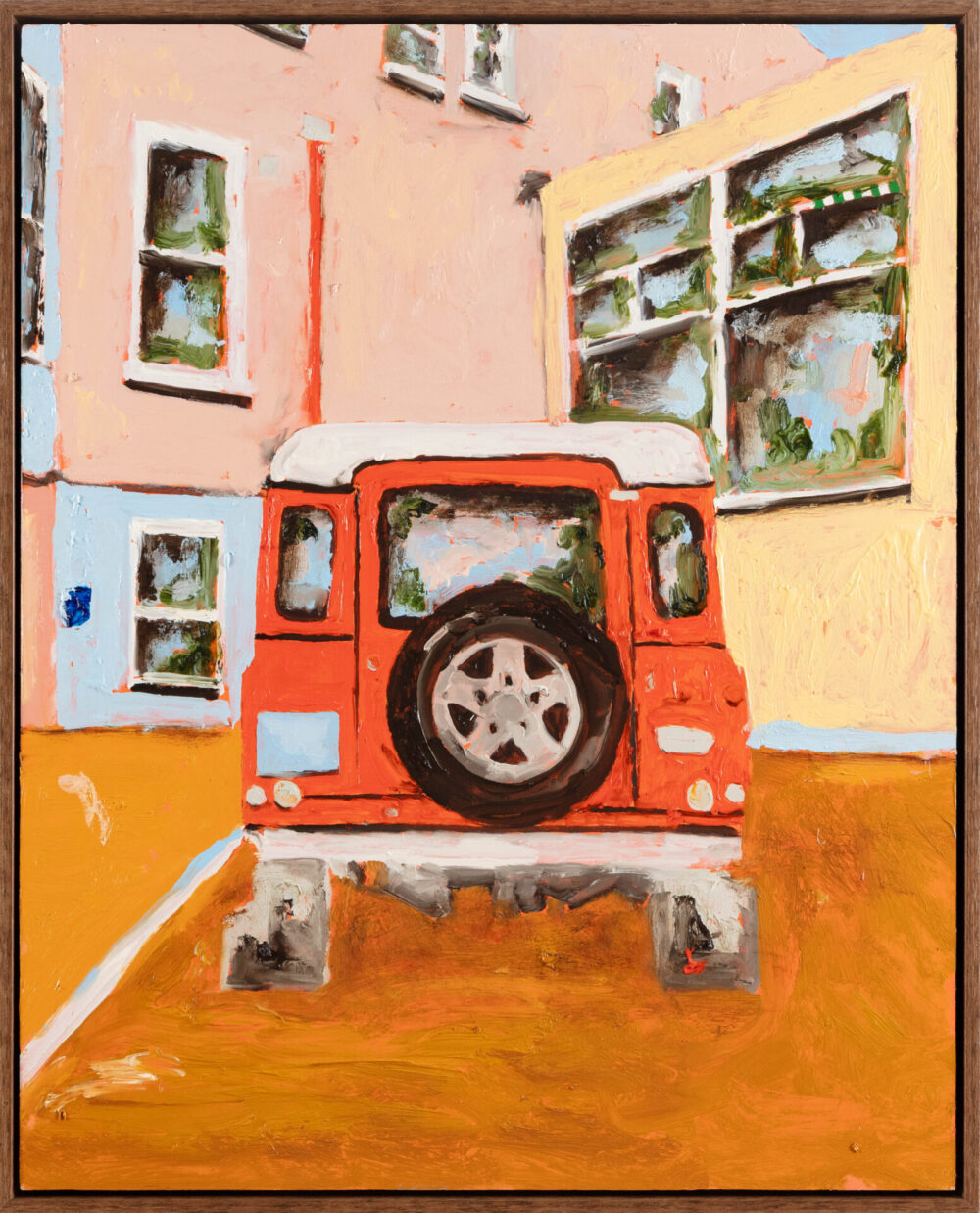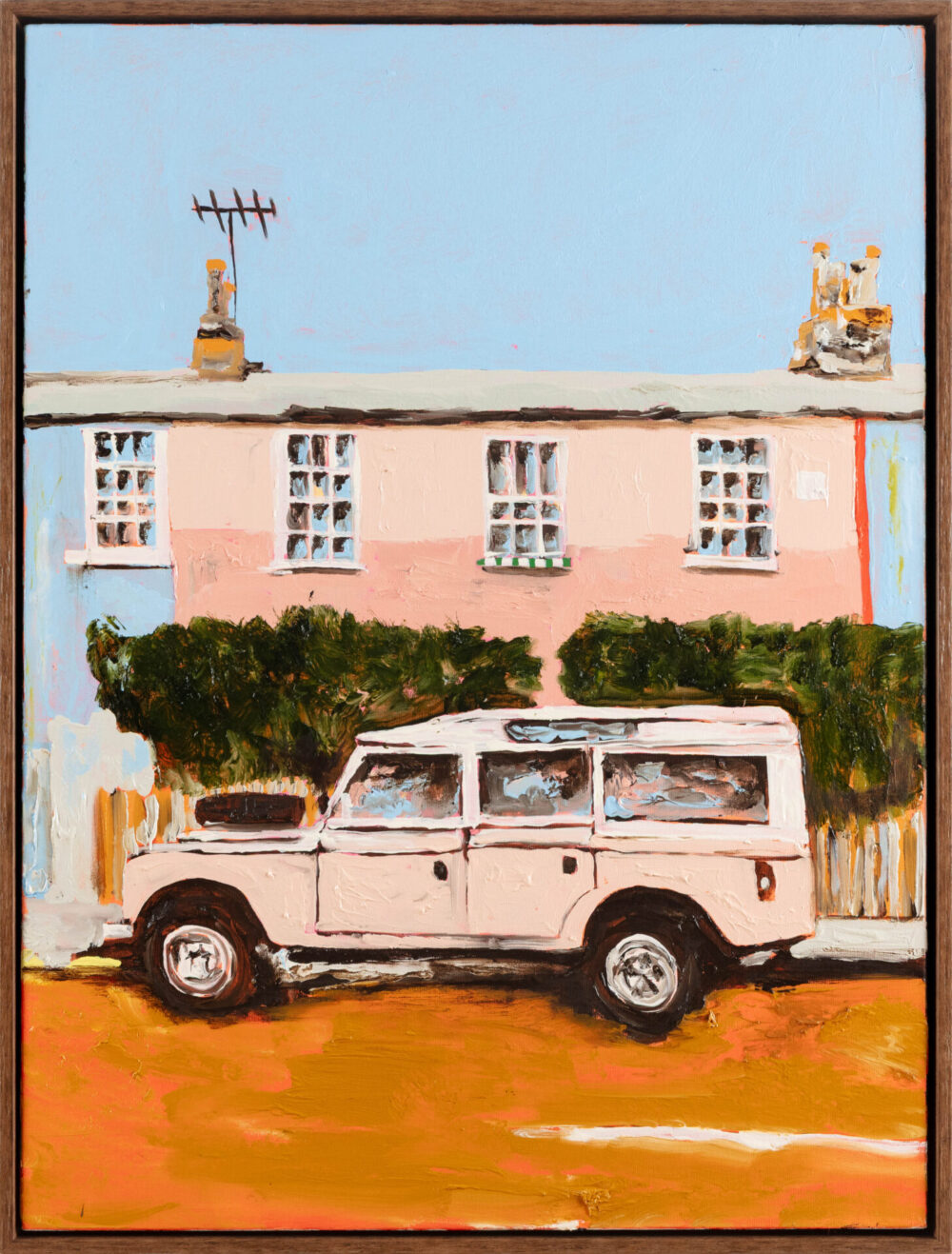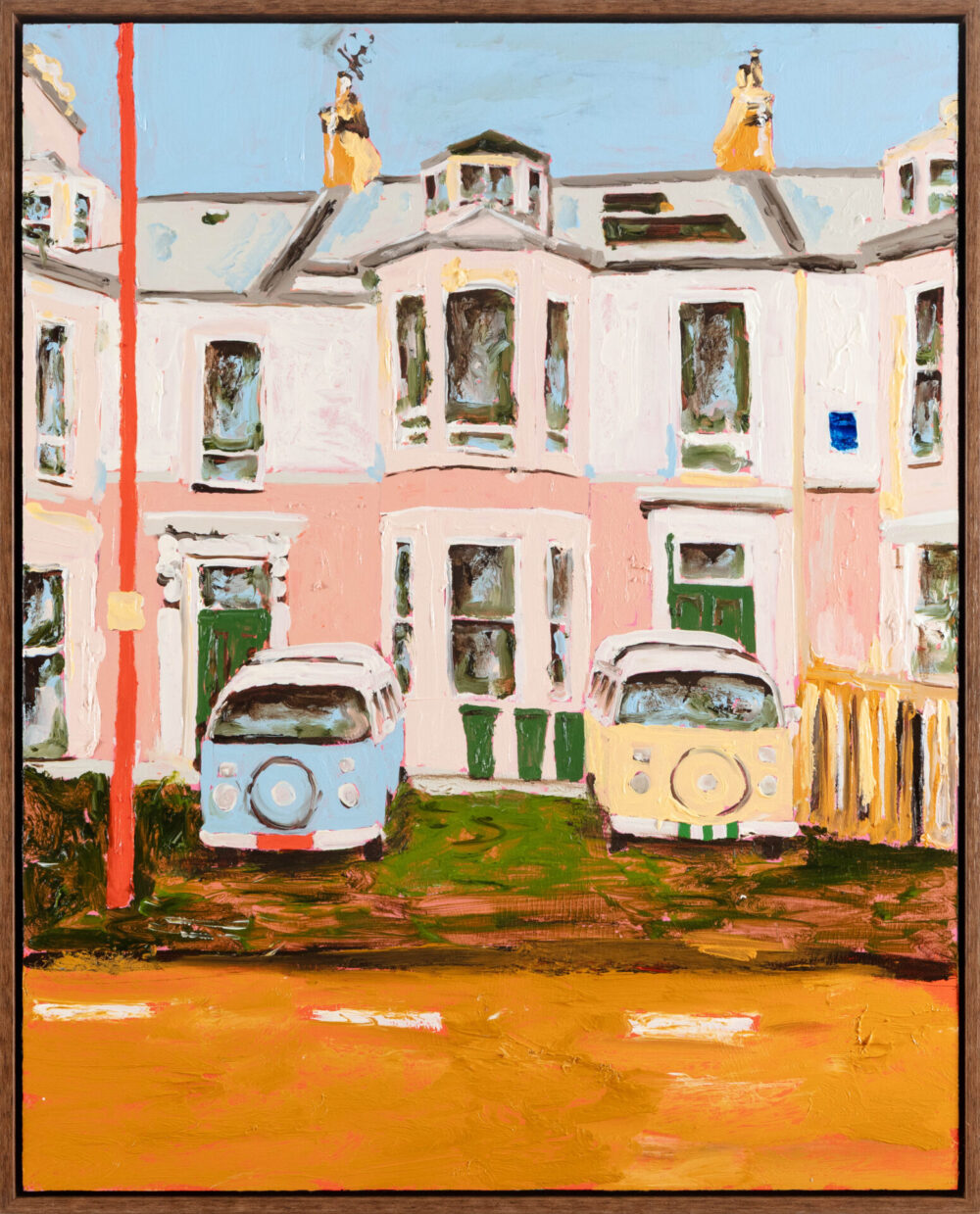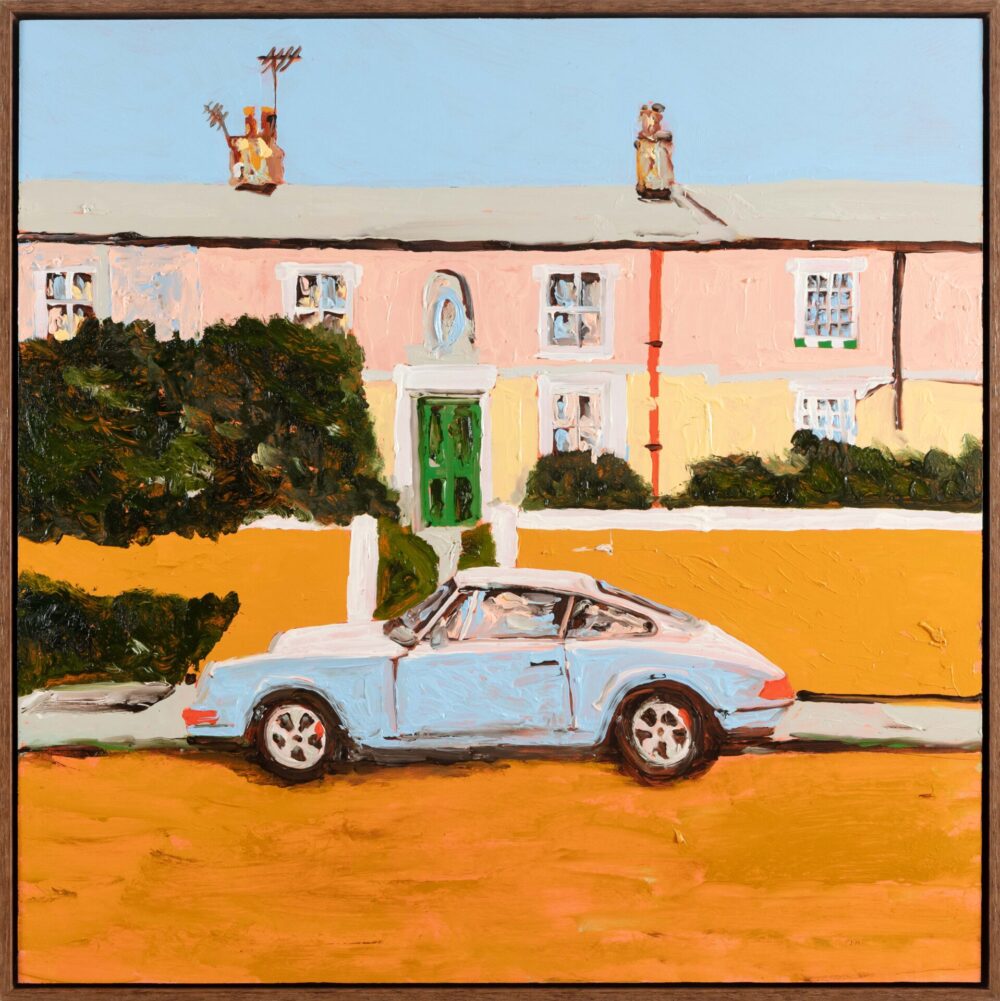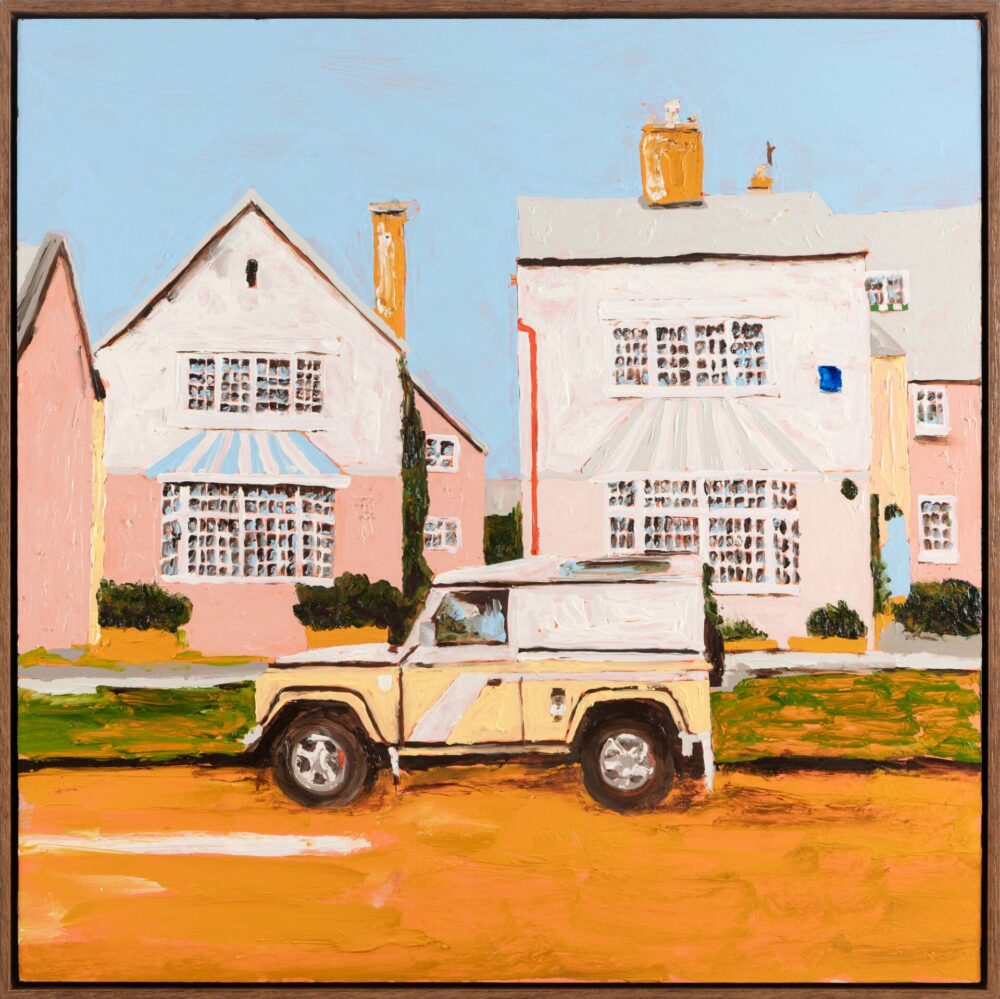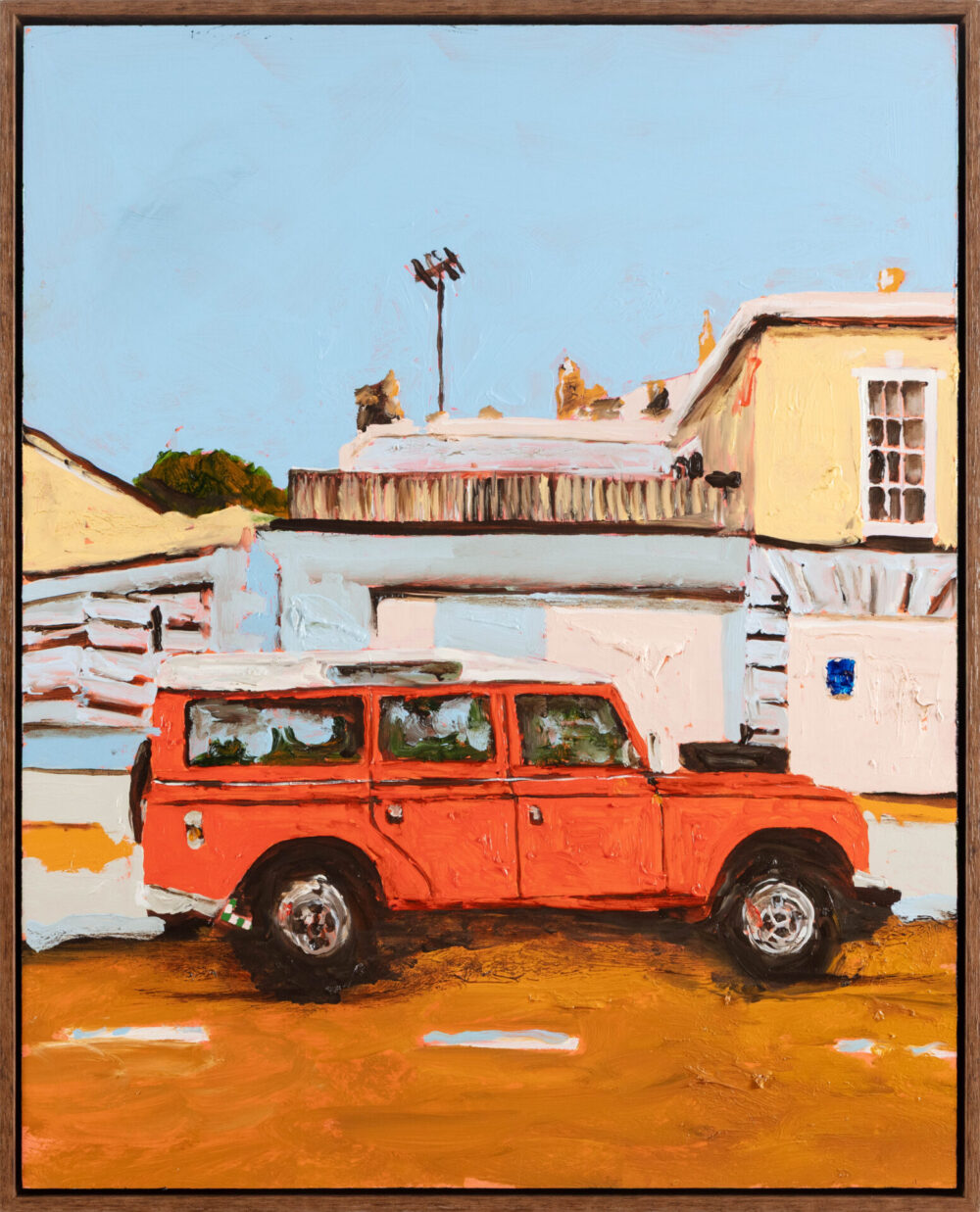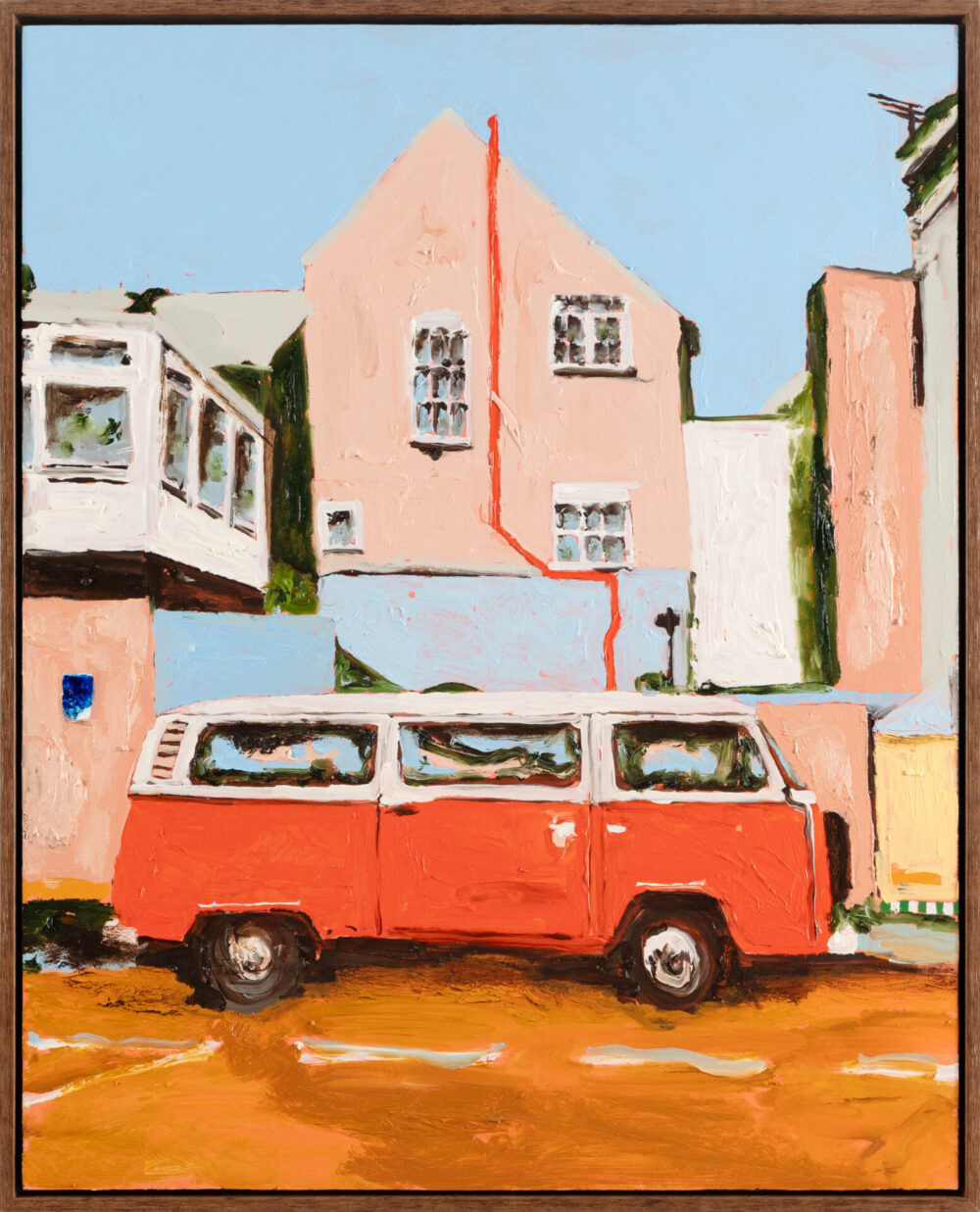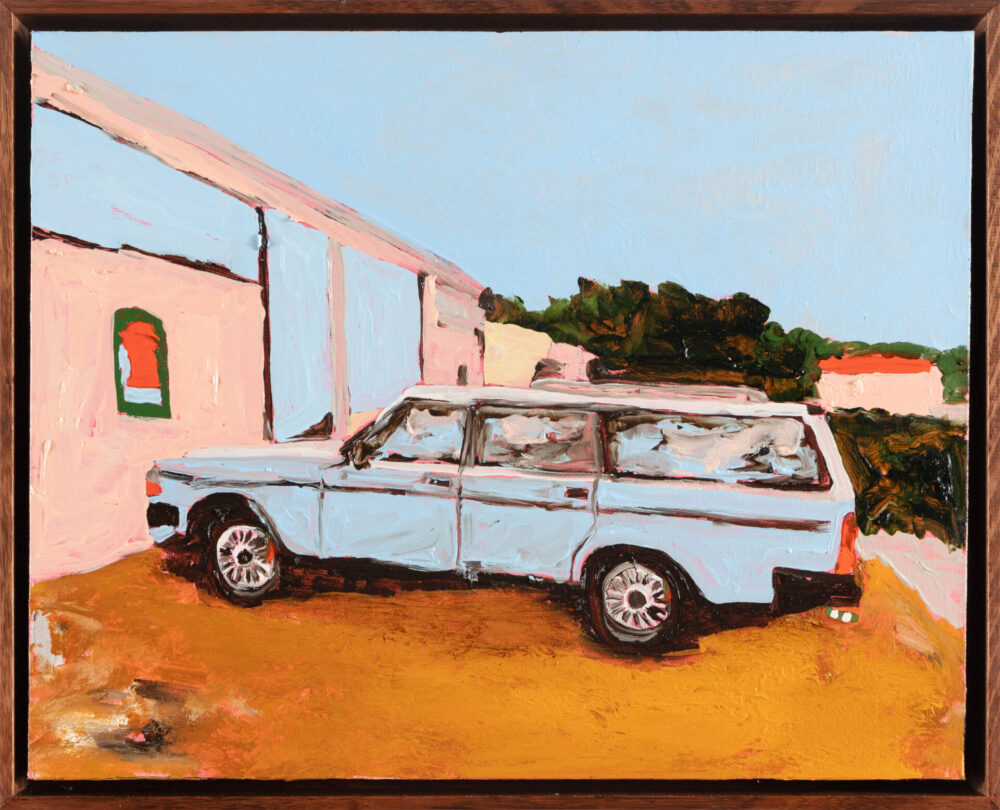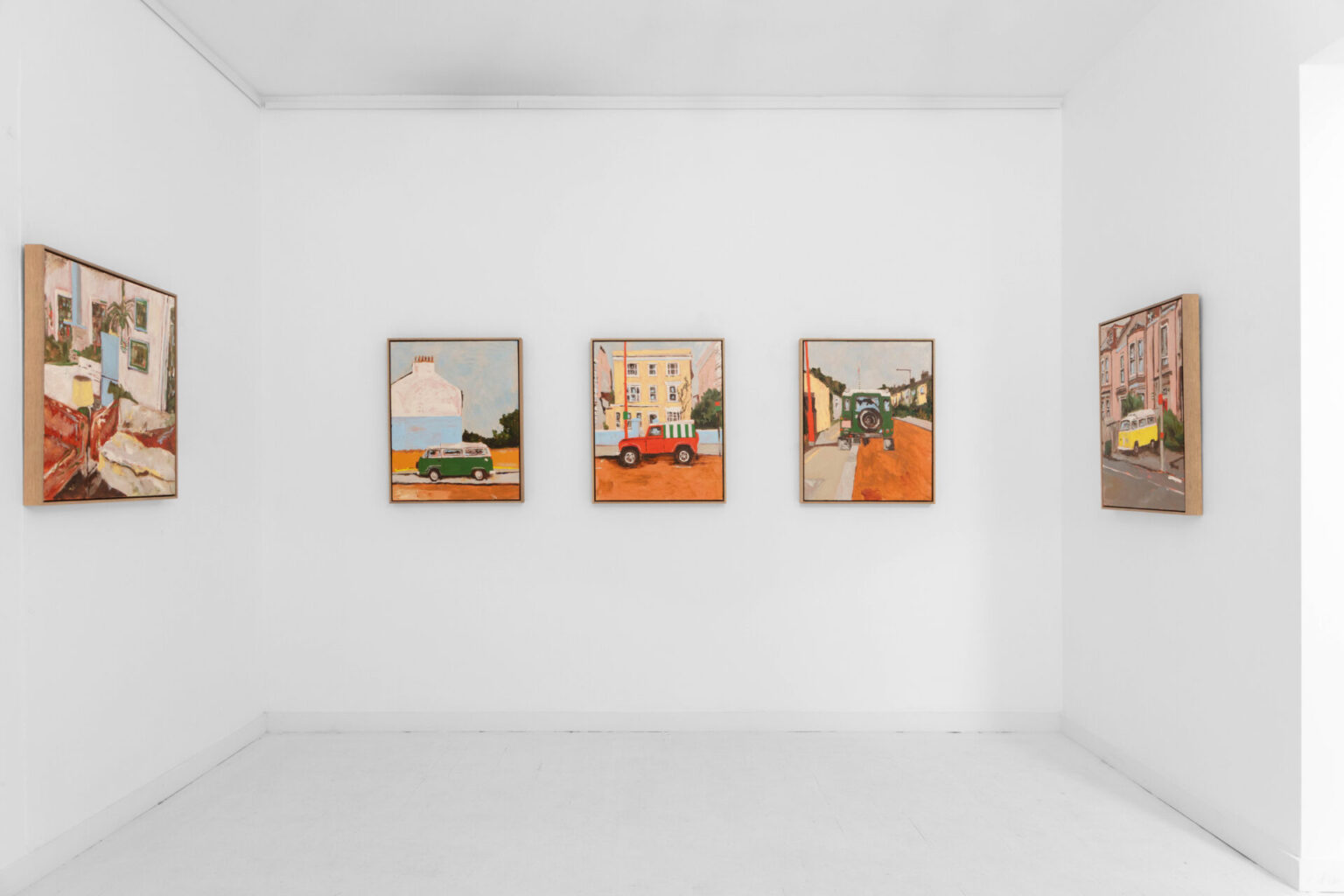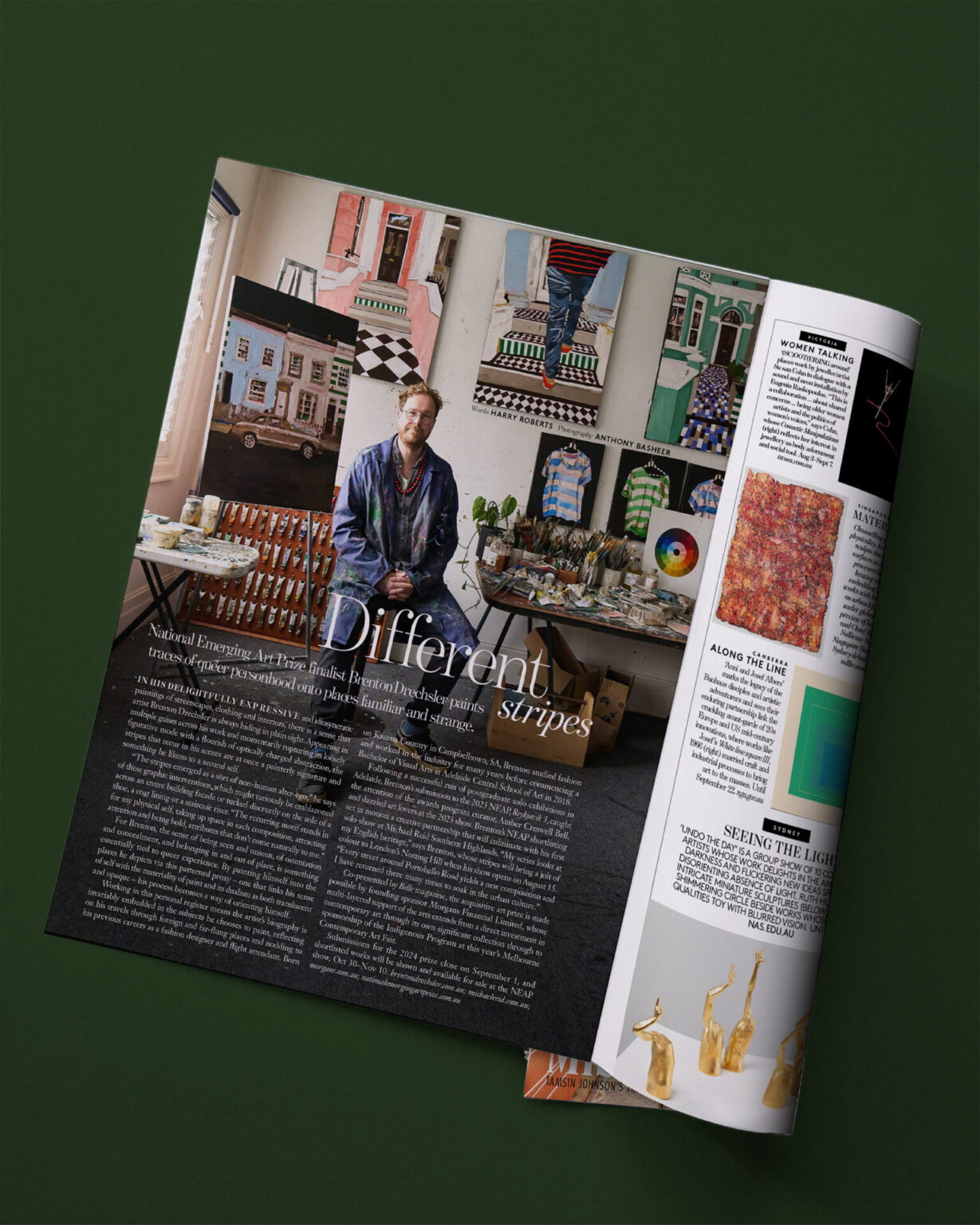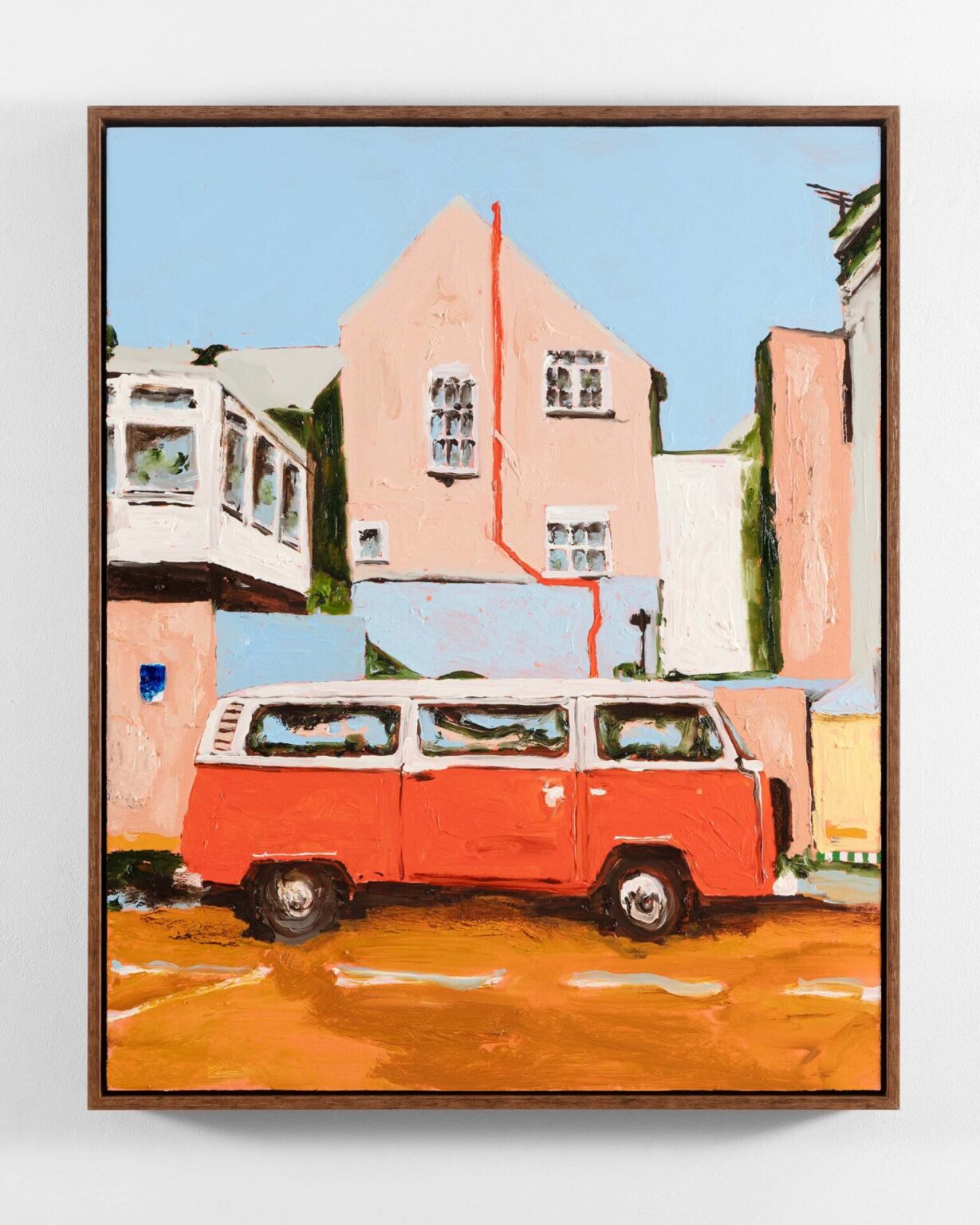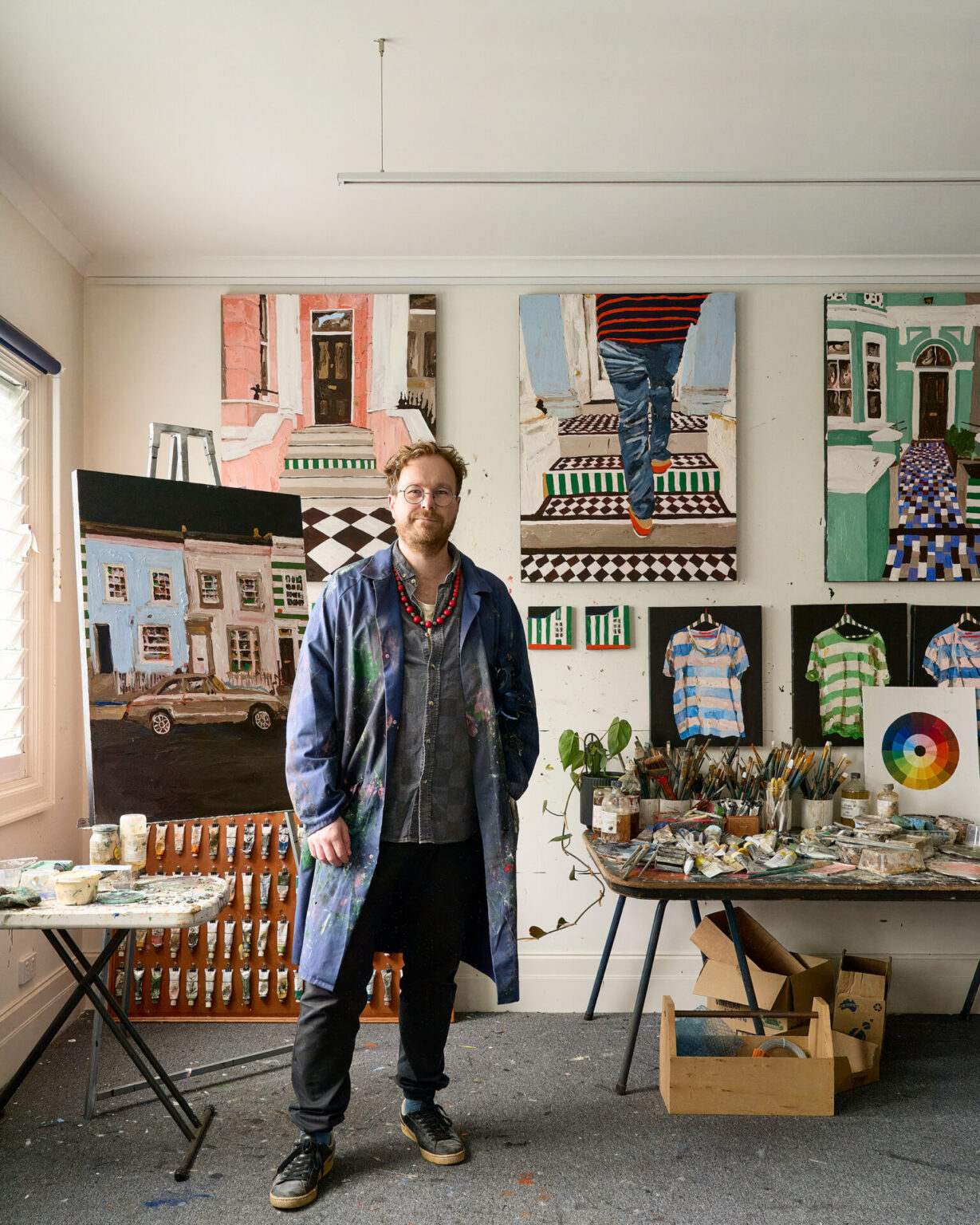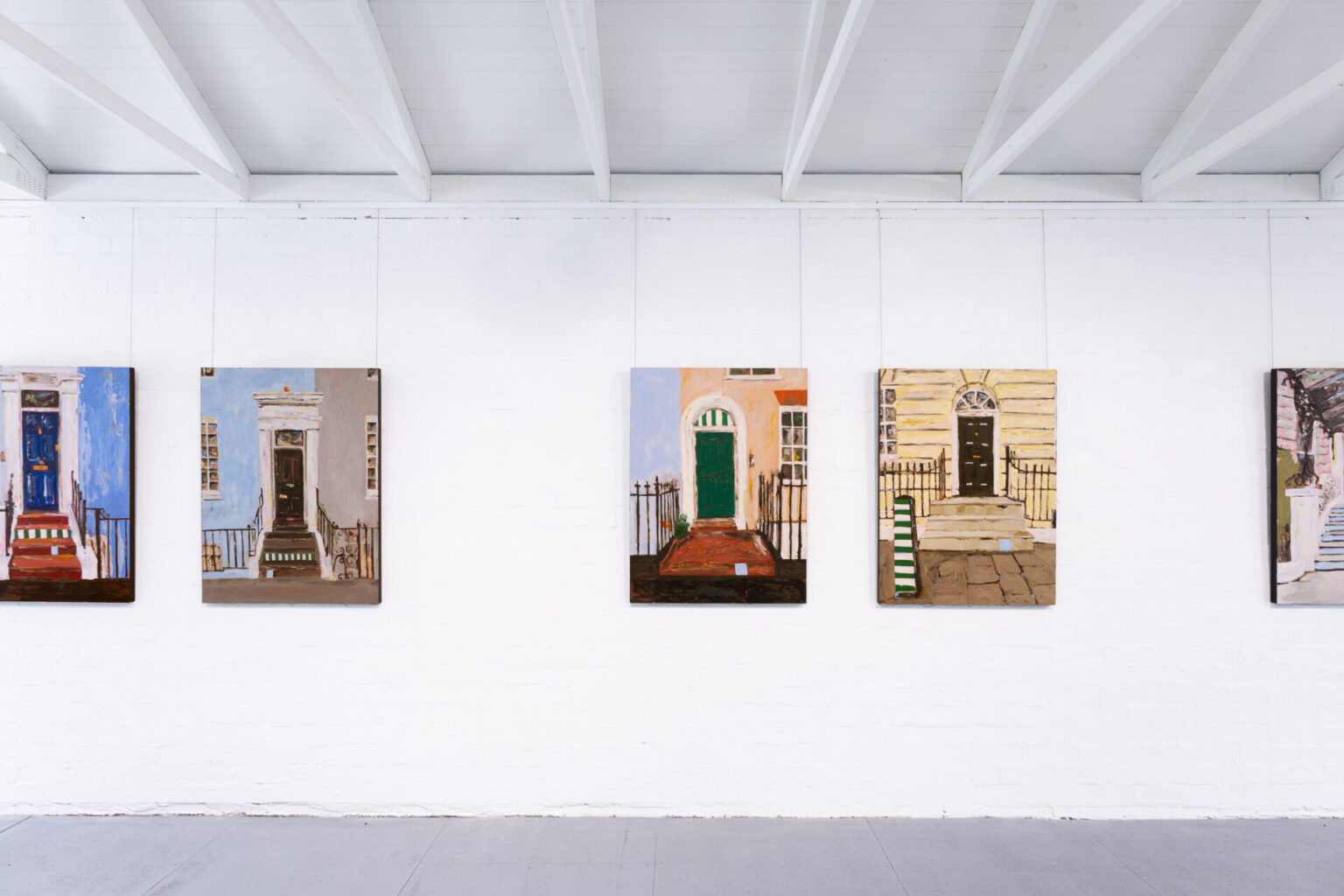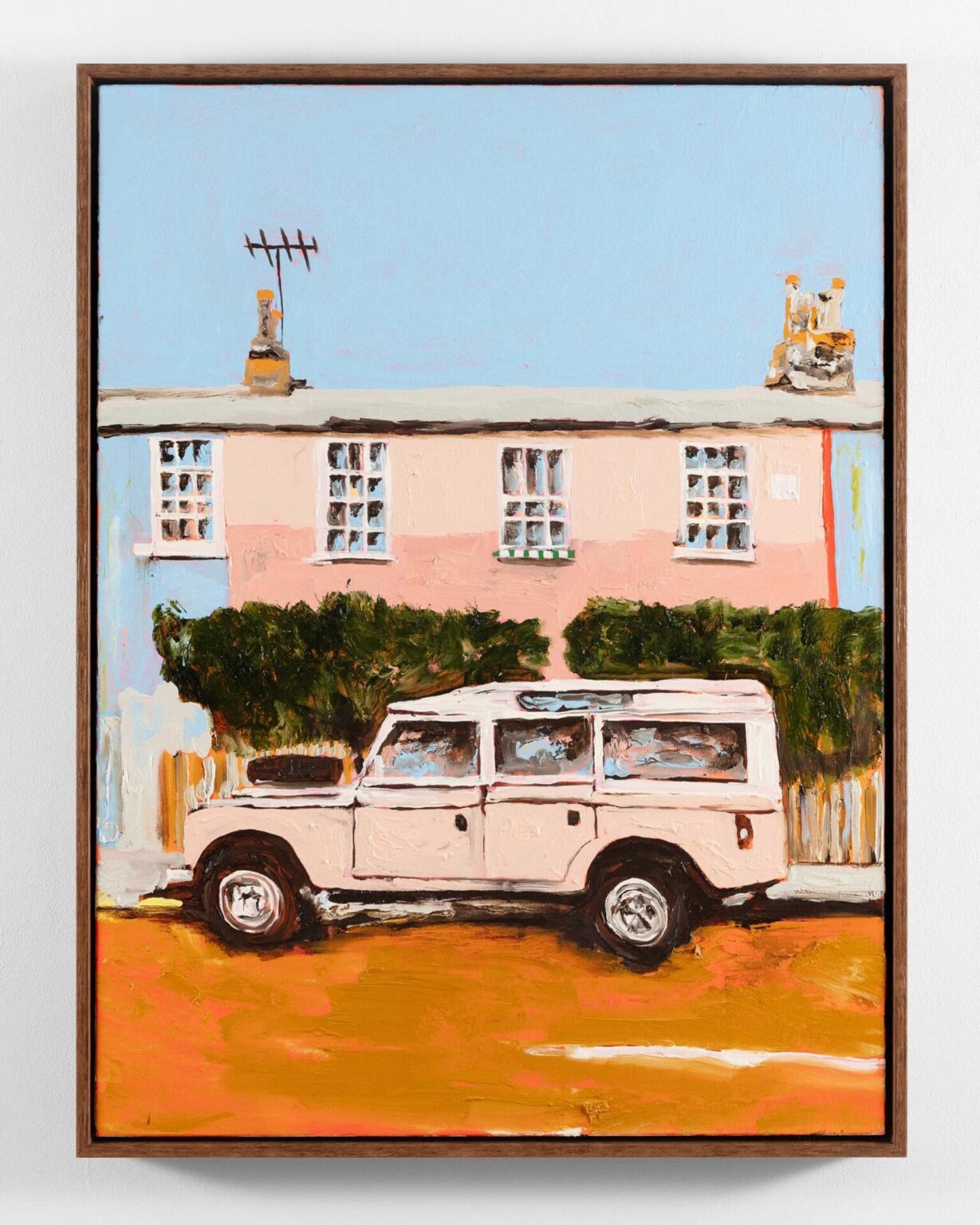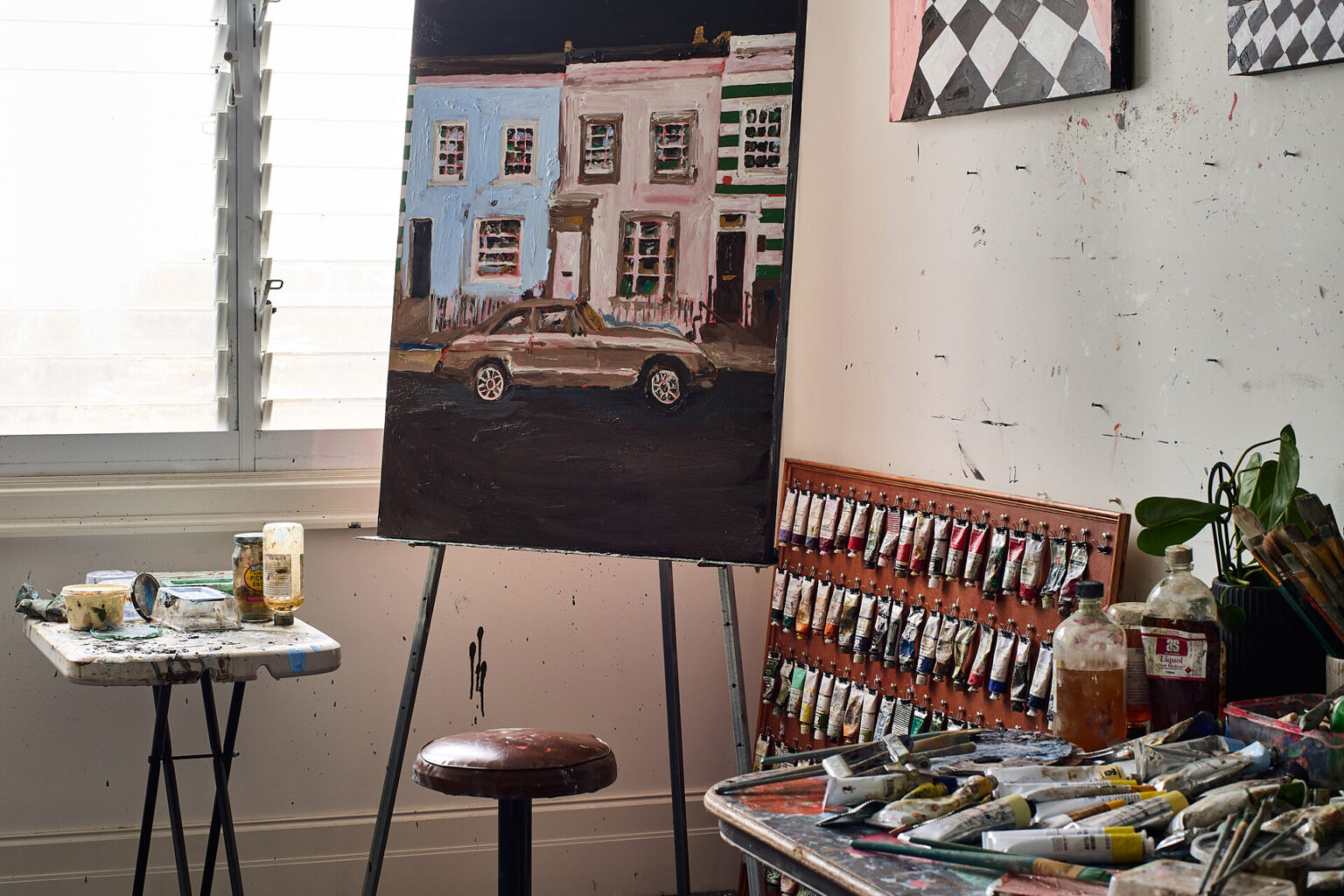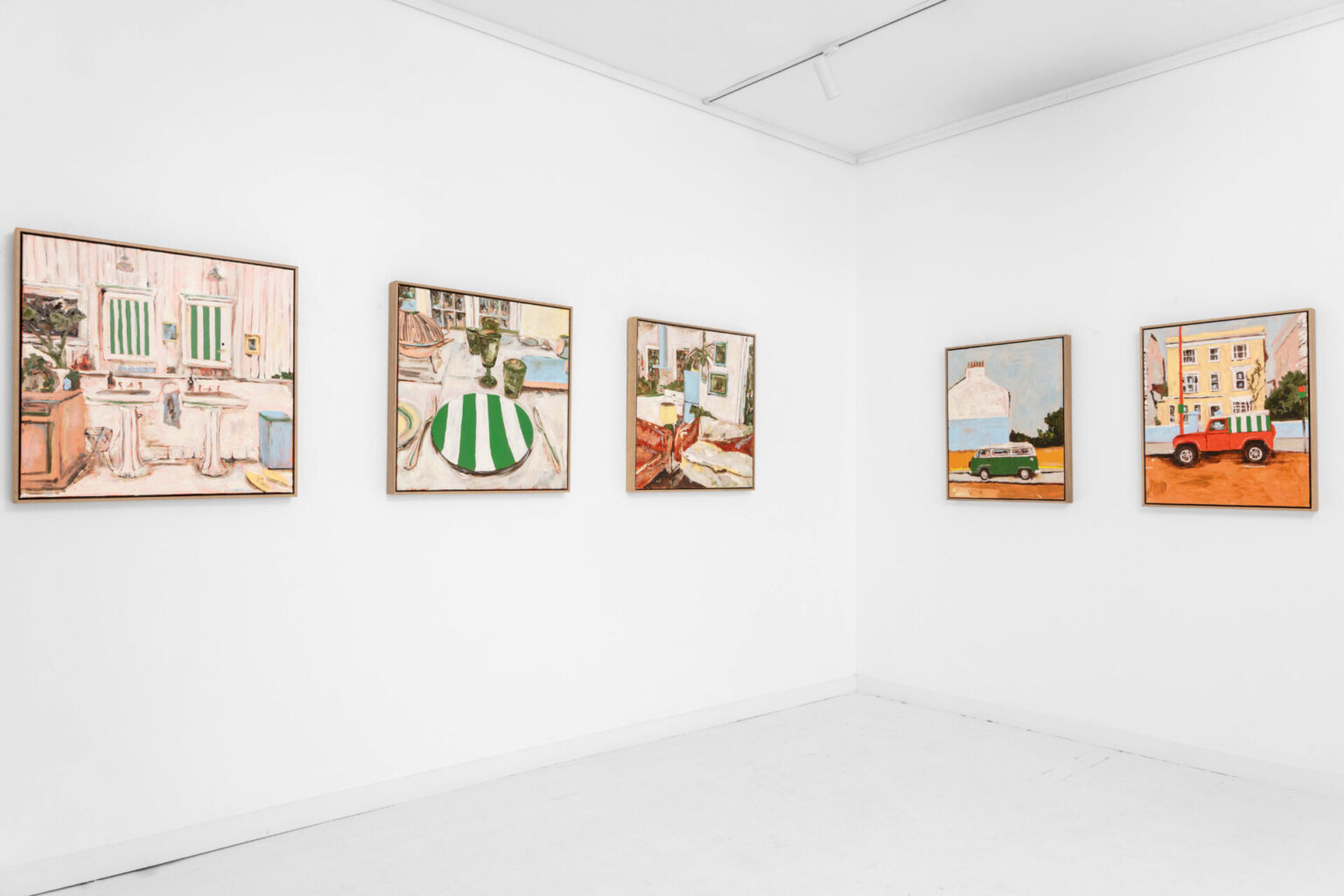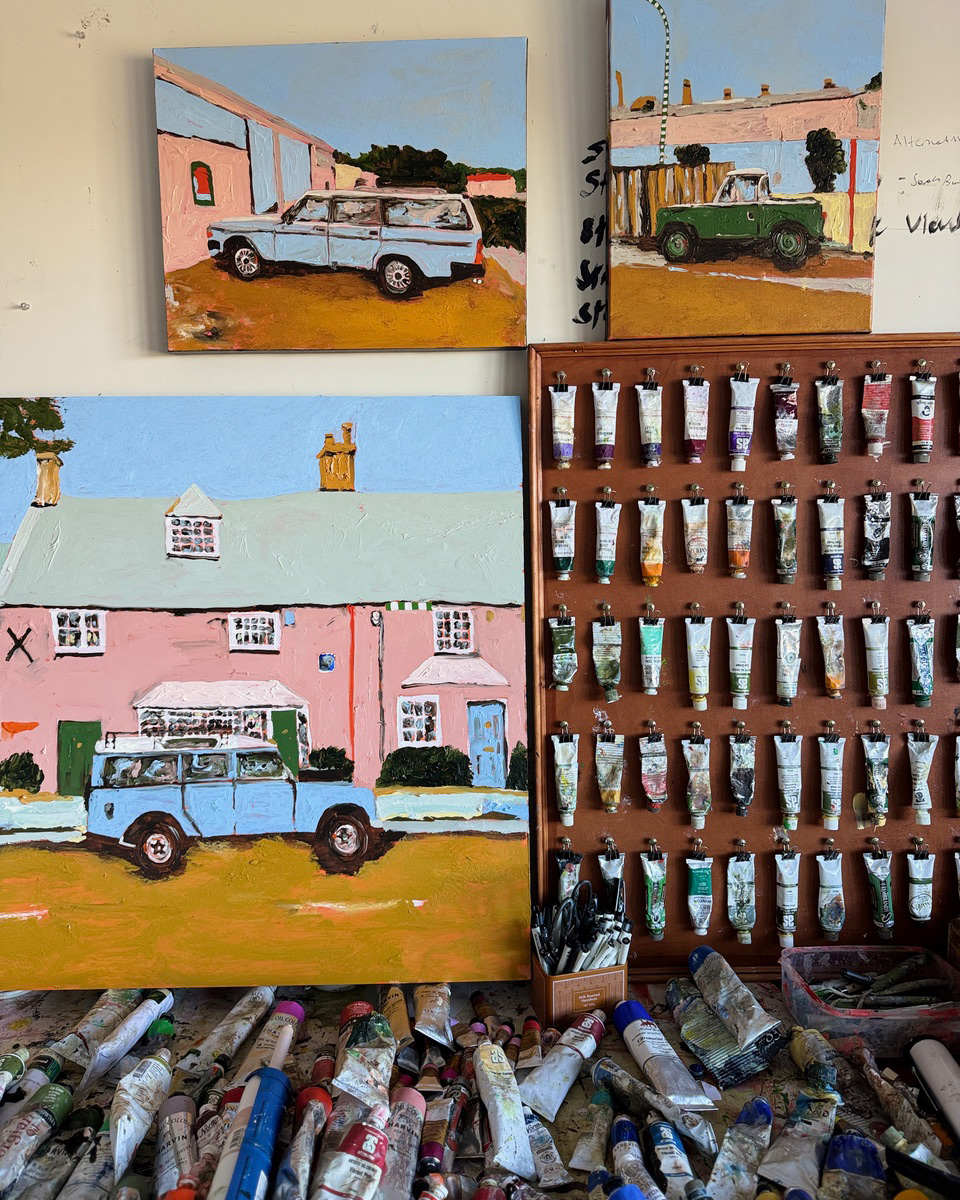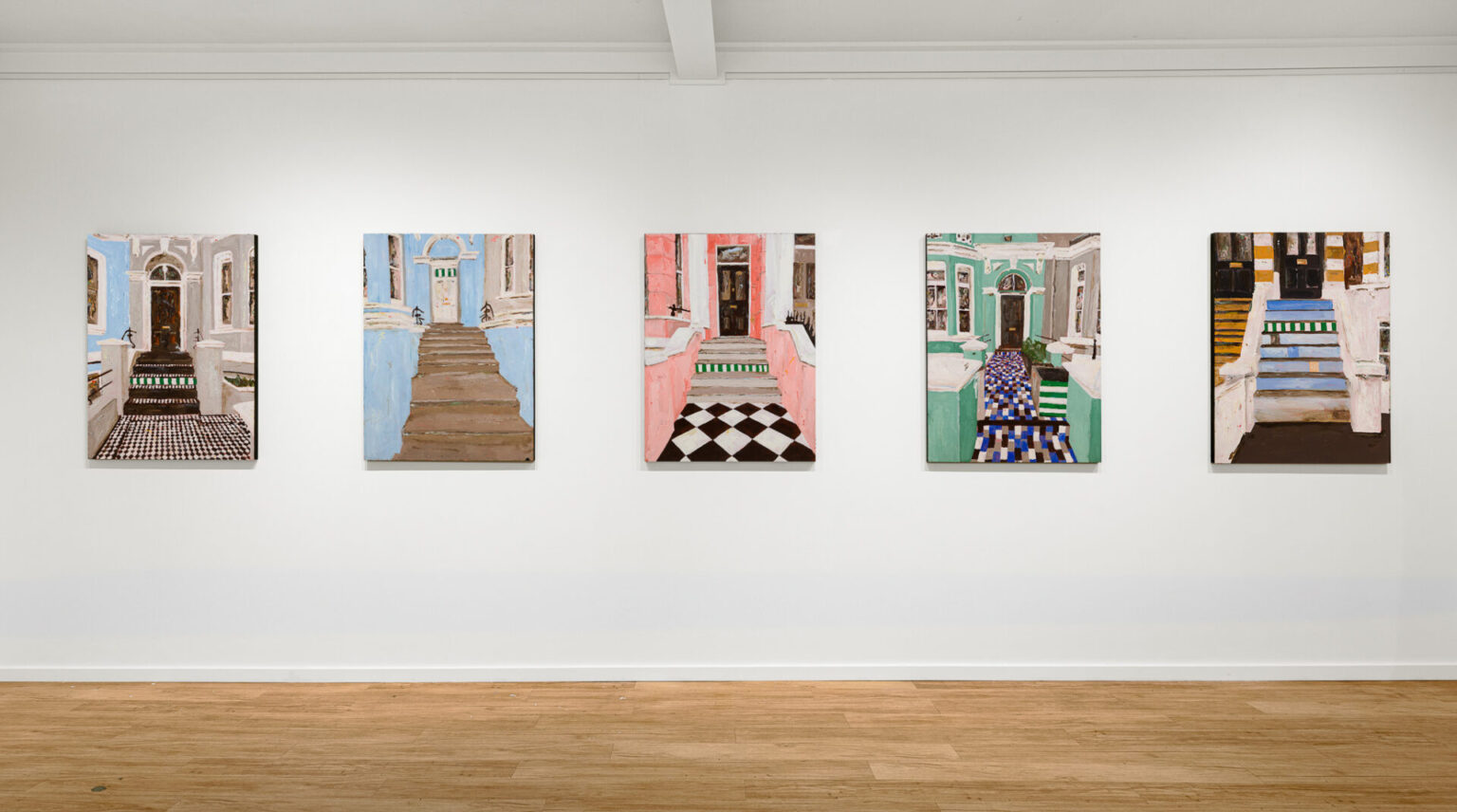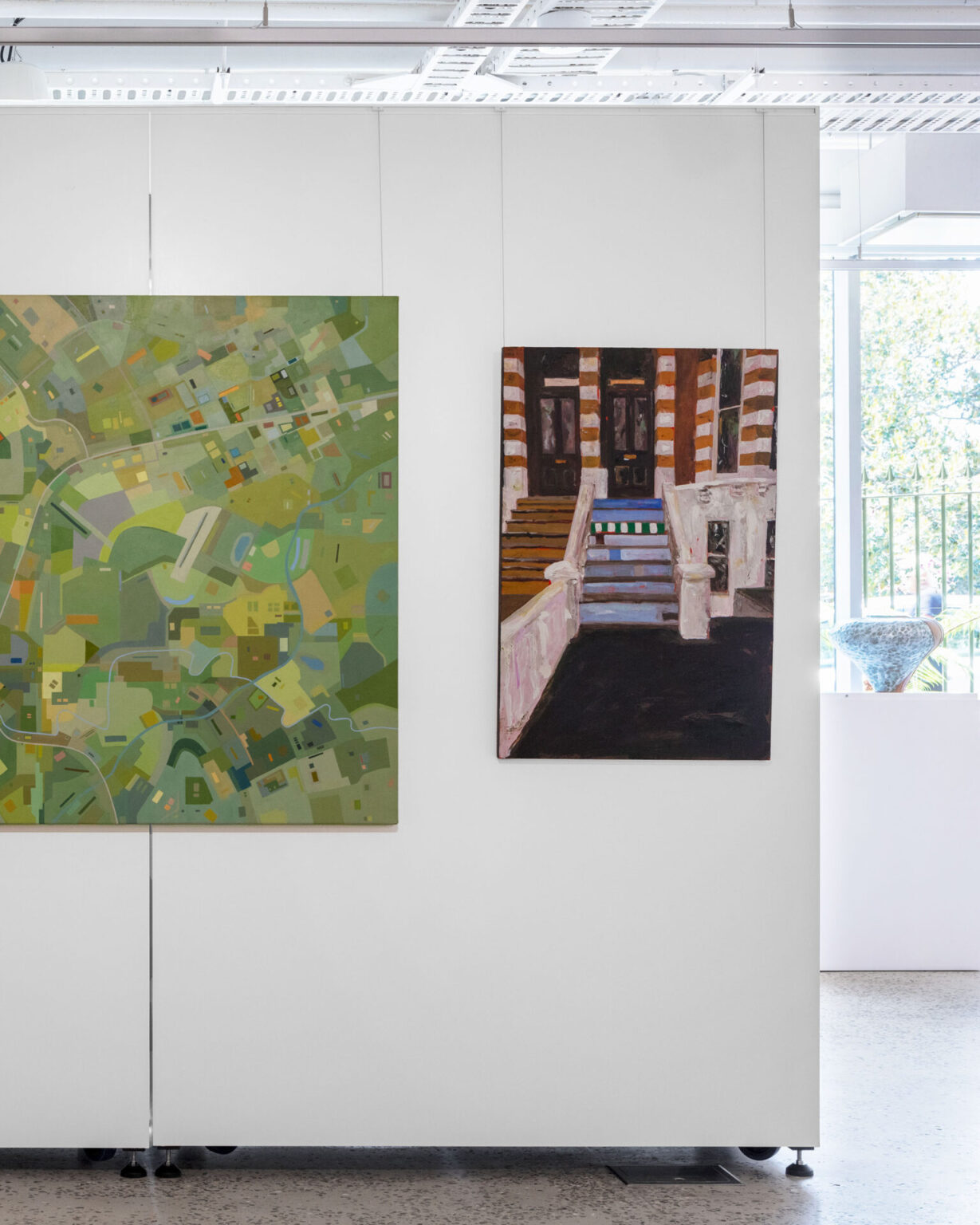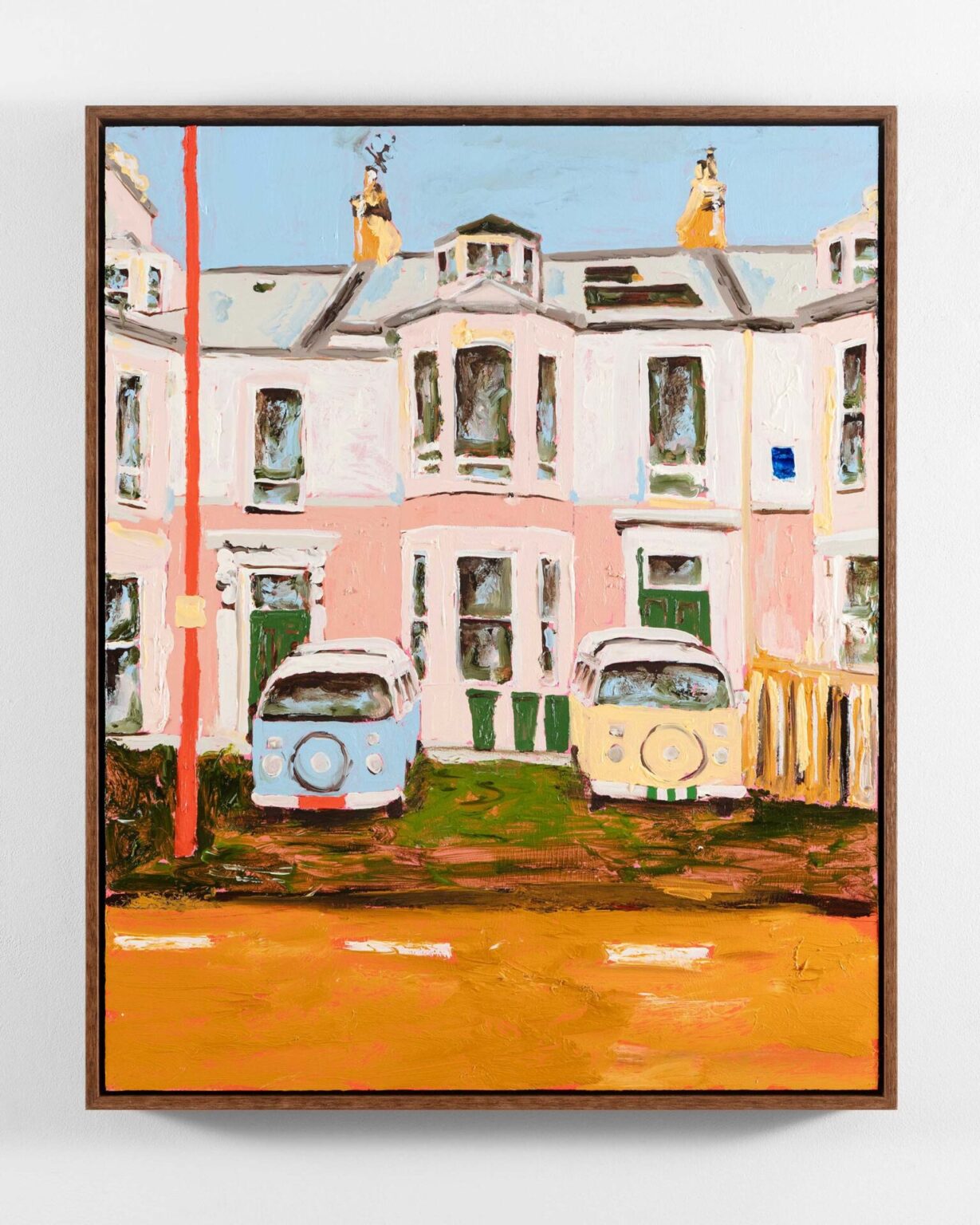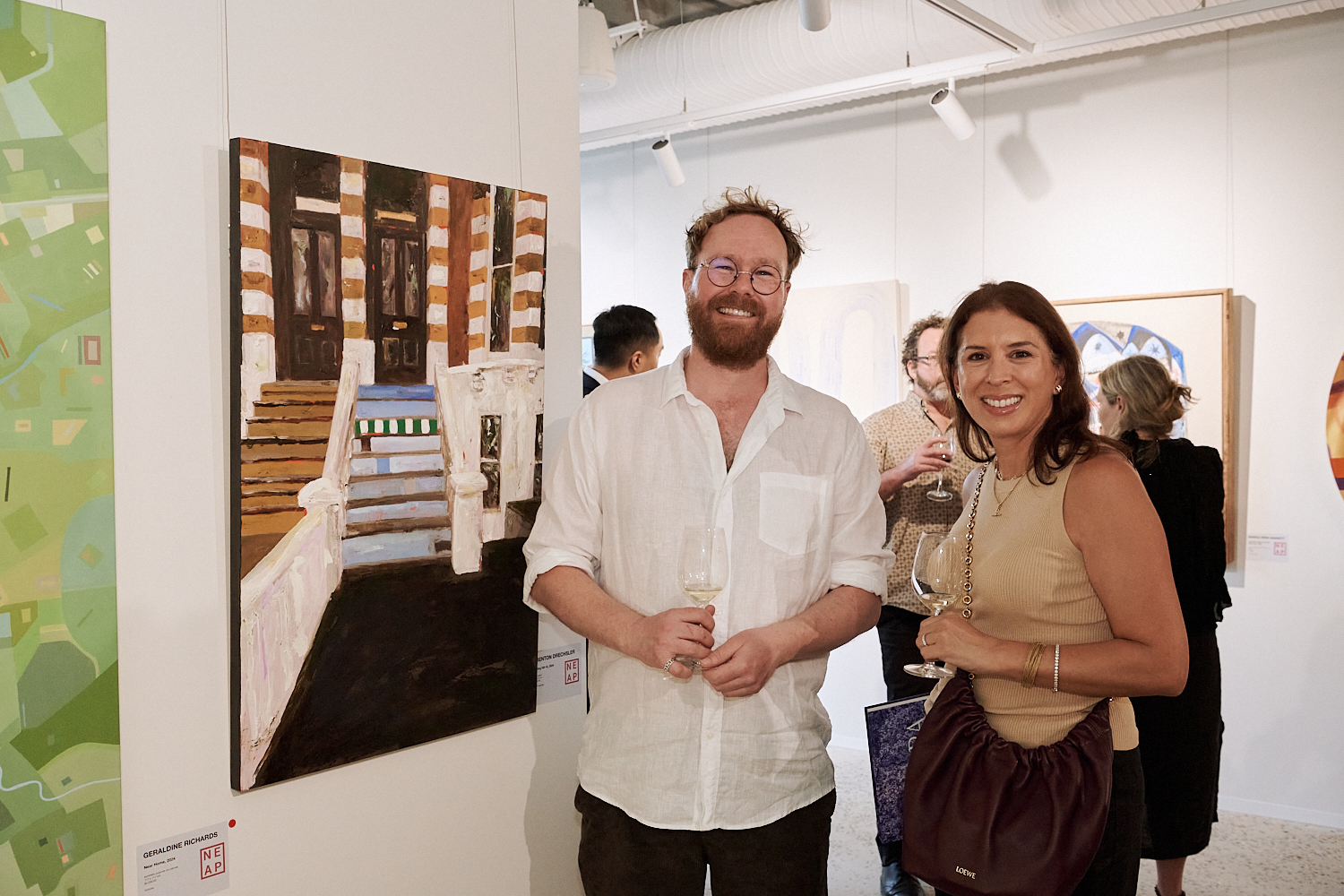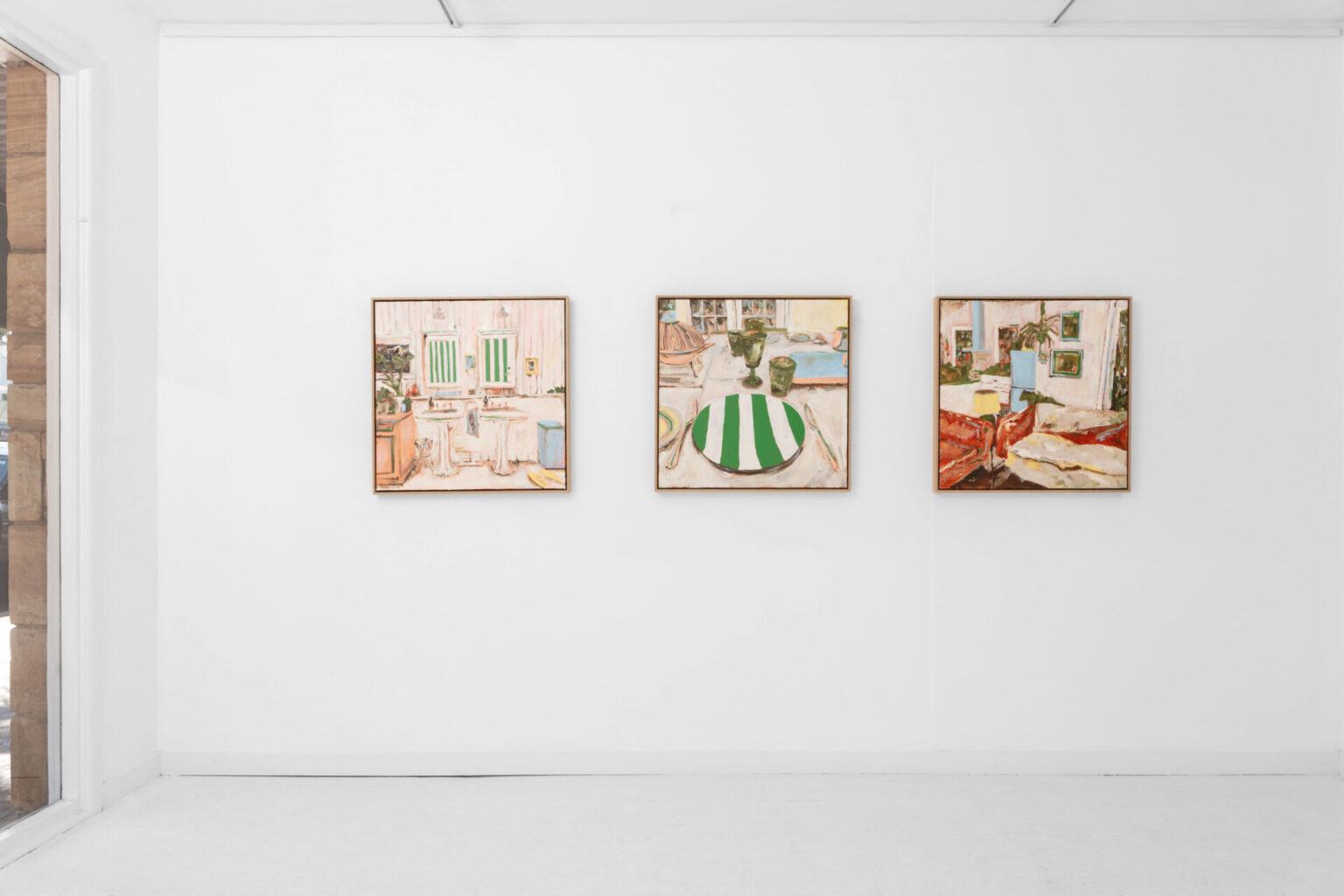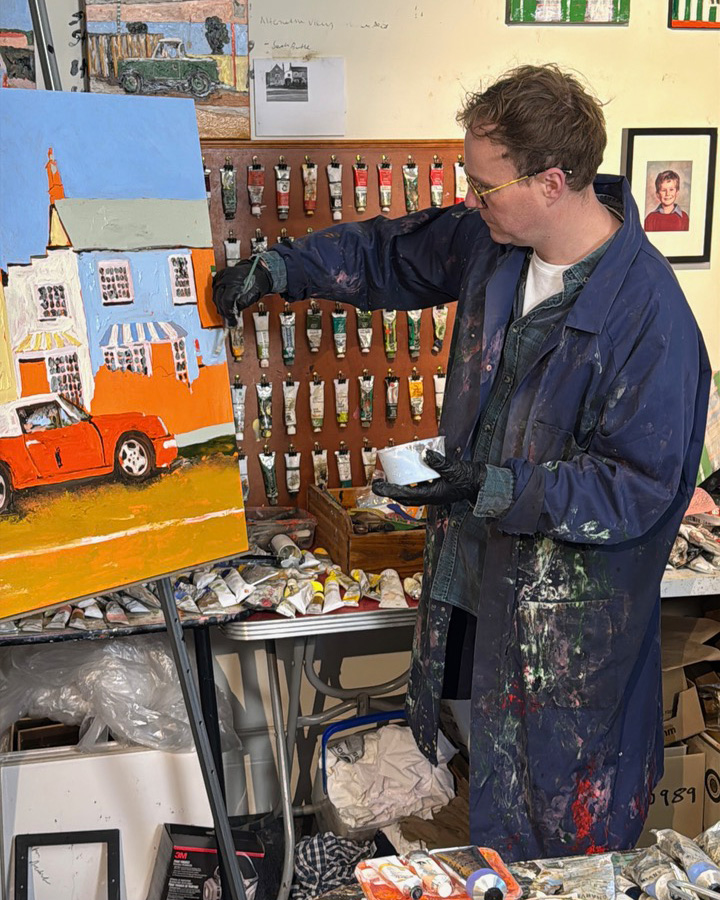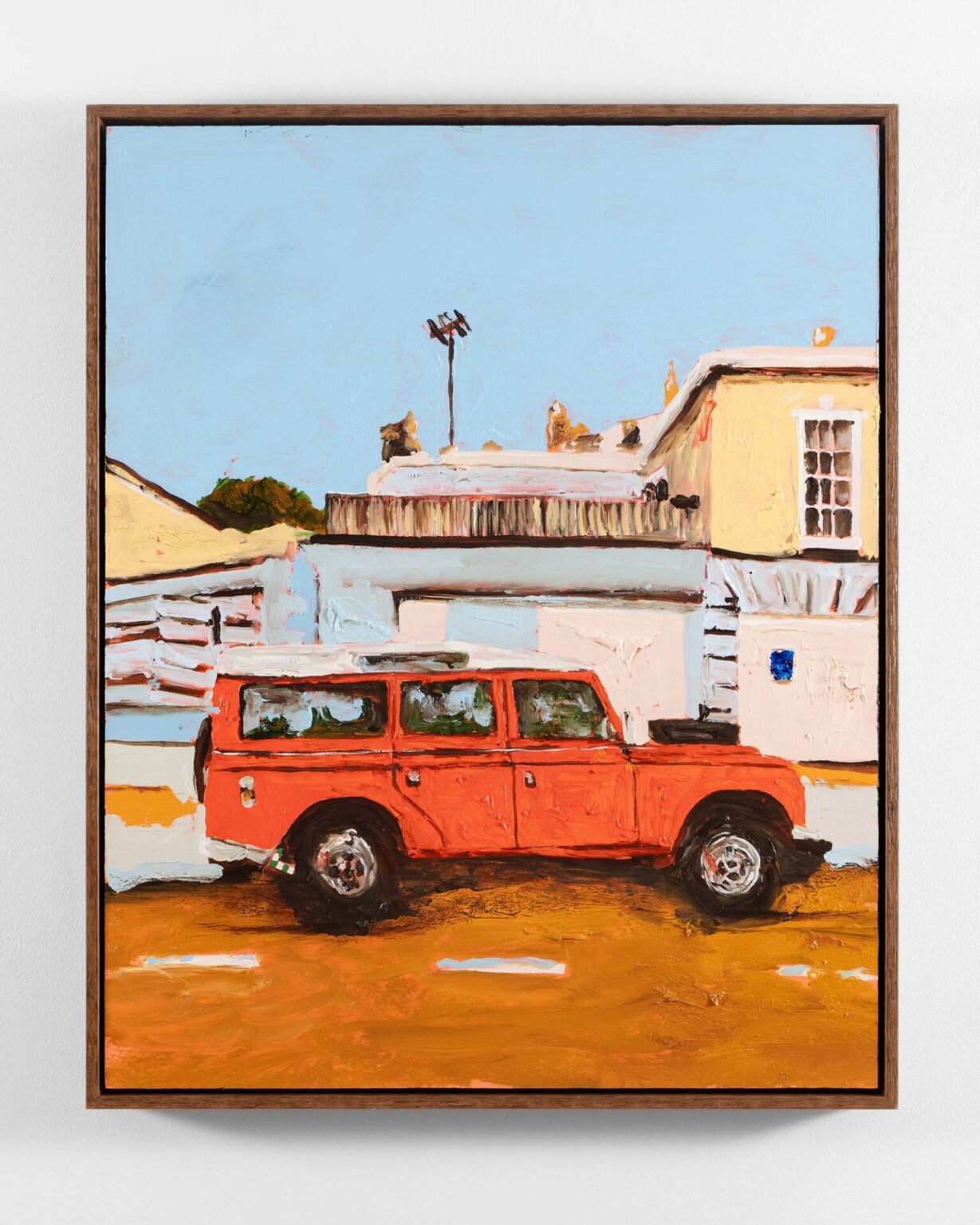Artist Profile – Brenton Drechsler
- Brenton Drechsler
- 7 Oct—2 Nov 2025
- Download now
To celebrate the announcement of Brenton Drechsler‘s representation by Michael Reid Northern Beaches and Michael Reid Southern Highlands, we recently sat down with the South Australian artist and two-time National Emerging Art Prize (NEAP) finalist to discuss the ideas, inspirations and experiences that have shaped his distinctive approach to painting.
“I seek out compositions that connect to my personal narrative as a queer person – whether through intimate depictions of interiors, vintage cars in foreign places or landscapes that reflect my real and imagined heritage,” says Drechsler, whose star turn in NEAP’s 2023 edition led to his first solo exhibition with Michael Reid Southern Highlands – a creative triumph that was met with widespread acclaim and has since been followed by two more solo presentations, including his sold-out Newport debut, Stripes 3 (Alternative Views). “When I paint, I feel as though I am embedding myself into each painted environment with a renewed sense of belonging. This is also why I include a green and white stripe in every painting: it is my way of saying, ‘I was here. I exist. This is who I am.’”
Alongside our interview with Drechsler, we are pleased to present a special release of seven vibrant new streetscapes that beautifully distil the painterly signatures for which he is now widely celebrated. “I call it my Neapolitan Series,” he says of this ebullient body of work, which arrives ahead of another significant milestone – his forthcoming showing in our flagship Eora/Sydney gallery’s year-end group survey, Painting Now. “It is about lightening up, embracing optimism for the future, and letting go of the past, with grief and self-deprecation.”
“Brenton Drechsler’s practice makes me smile,” says Michael Reid OAM. “His paintings, often set against a heavily urbanised world, are subversively populated in this series with freedom machines – the Porsche, the Land Rover, the Kombi van and the Volvo station wagon. All are nostalgically drawn from an earlier era, each quietly longing for the freedom of the bush or the open road. What enriches this warm, multi-layered visual language is Drechsler’s painterly touch: colour-soaked, paused streetscapes filtered through a personal lens, where cars exist as vessels of memory and longing.”
To discuss works from Brenton Drechsler’s latest series or sign up for first access to his future projects, please email sophienolan@michaelreid.com.au
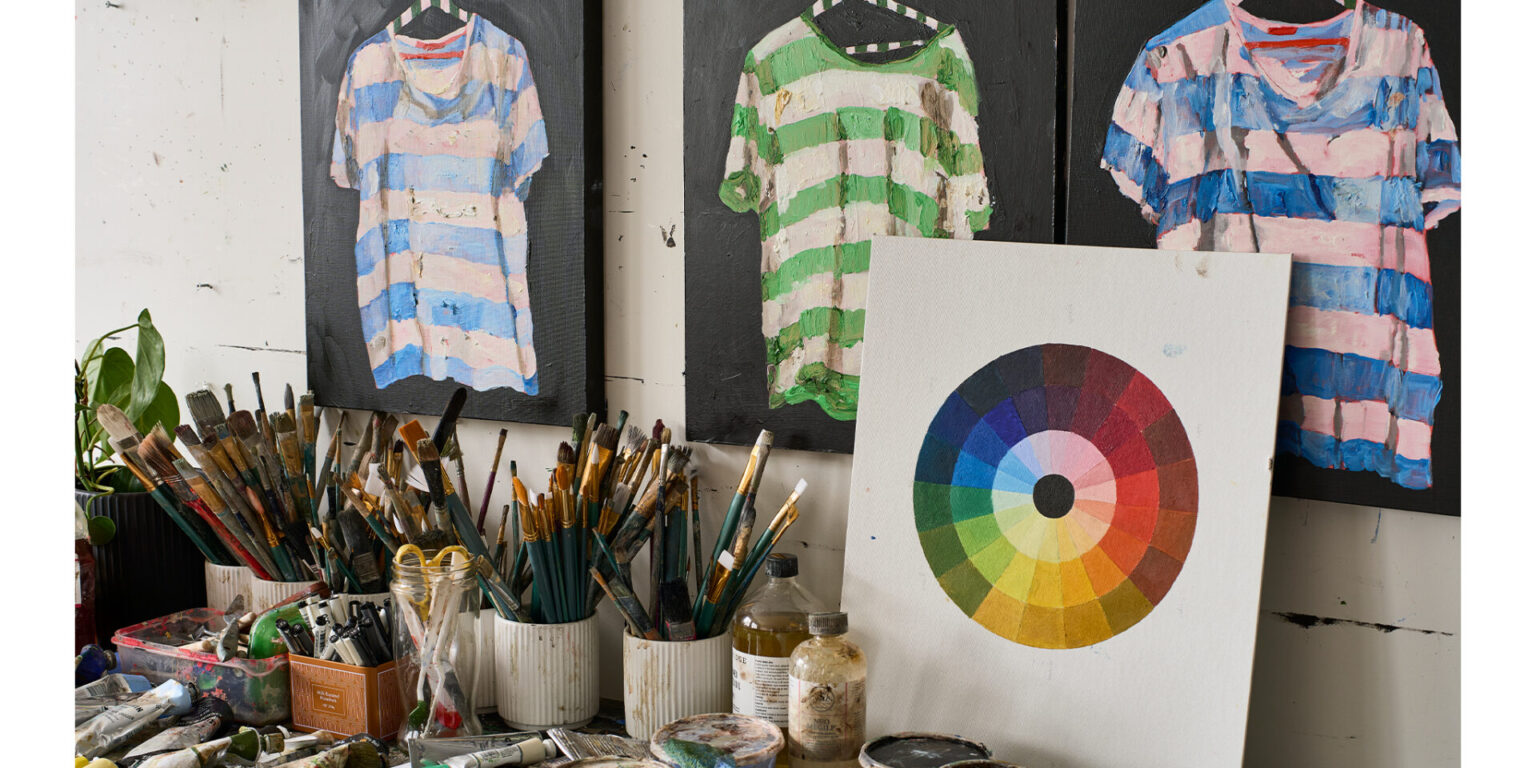
What were some of your early artistic influences?
Having studied at Adelaide Central School of Art for five years, I was introduced to a broad range of historical and contemporary artists who influenced me during that time. Early on, it was the storytelling of Lucian Freud and Egon Schiele that inspired my desire for an expanded visual language. Contemporary painters such as Kym Luetwyler, William McKinnon, Clara Adolphs, Richard Lewer and Salman Toor also resonated strongly and influenced my experimental use of oil paint.
What initially drew you to painting? Are there themes, references, approaches, styles or techniques that you have returned to over time?
I have a background in fashion design and entered art school thinking I would naturally translate my career skills into becoming a textile artist. However, as I learned more about oil painting, I couldn’t look past the textile-like and bodily qualities of paint itself. I love painting in both transparent and opaque layers, applying paint in various thicknesses and styles. I love that paint is forgiving – I have sewn many dresses where the slightest mistake meant recutting an entire pattern piece, but with paint, I have the freedom to make changes and fix ‘mistakes’ as I go. I also enjoy building narratives in my work, and the storytelling that continues to emerge in my practice brings me great personal fulfilment.
Could you tell us a bit about how you first pursued painting as a career?
When I studied fashion design back in the 2000s, I would often throw acrylic paint onto canvas as a release from the stringent pattern-making and sewing I had to do – an antithesis to the precision of garment construction, where decisions often come down to the millimetre. After graduating from fashion school and entering the industry, I quickly realised that its culture did not align with my personal values. Seeking an alternative way to express myself creatively, I eventually found my way into art school. Twenty years on, I am grateful for this career progression, as I don’t believe I would be the painter I am today without those early experiences.
What have been some of your favourite career experiences or moments of creative breakthrough in your art practice to date?
There’s a thrill in seeing my work displayed on the walls of gallery spaces. It always takes my breath away to walk into a space and see something I made presented in a professional setting. I love seeing my work curated alongside that of other artists in group exhibitions, as it speaks to a sense of community and an emerging camaraderie with fellow makers. Engaging with collectors and having conversations with them about my work has also been incredibly rewarding. Another strong point in my practice is translating my love of travel into my art, as I create works inspired by self-directed residencies overseas. This has given me a sense of purpose when I am in foreign places.
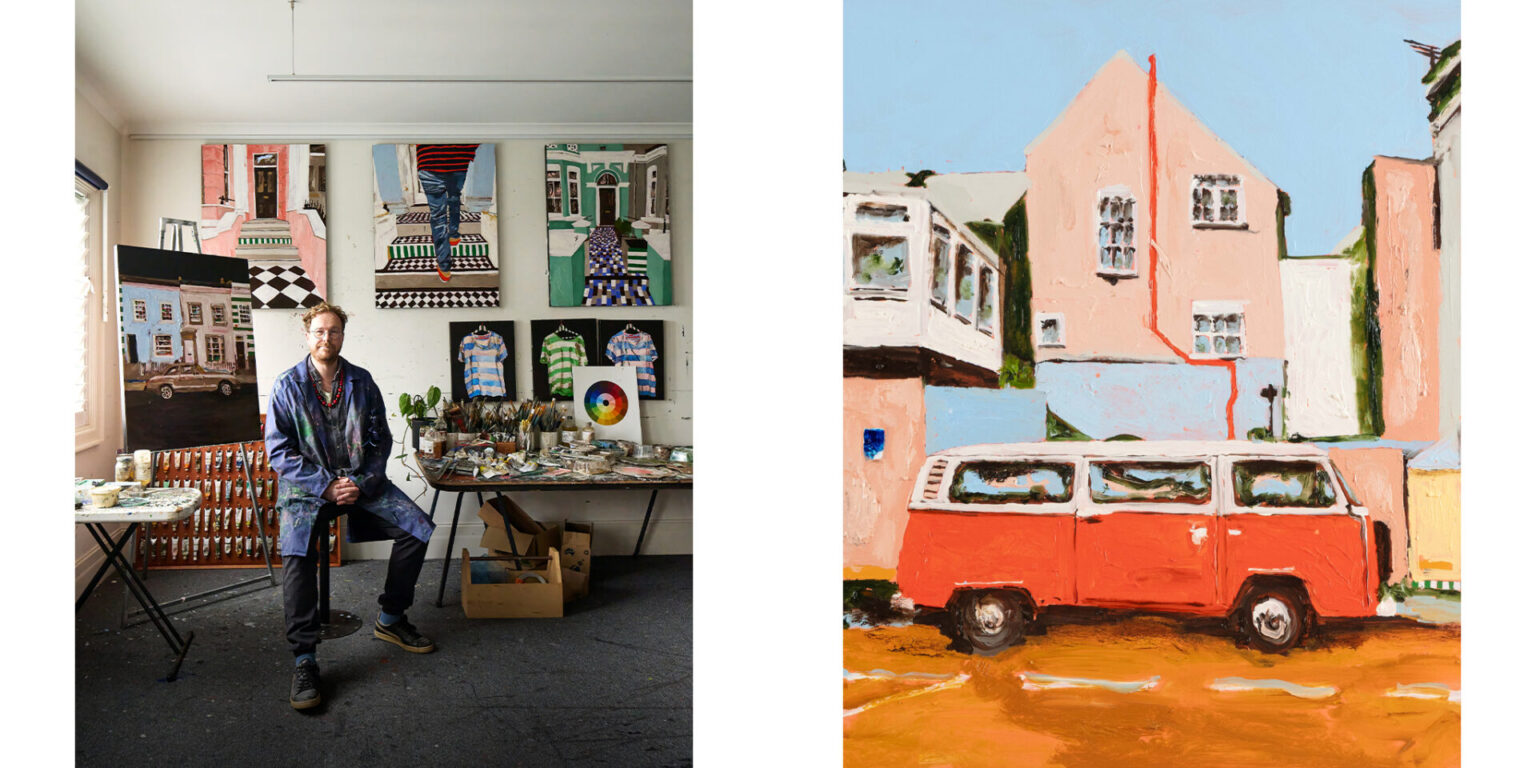
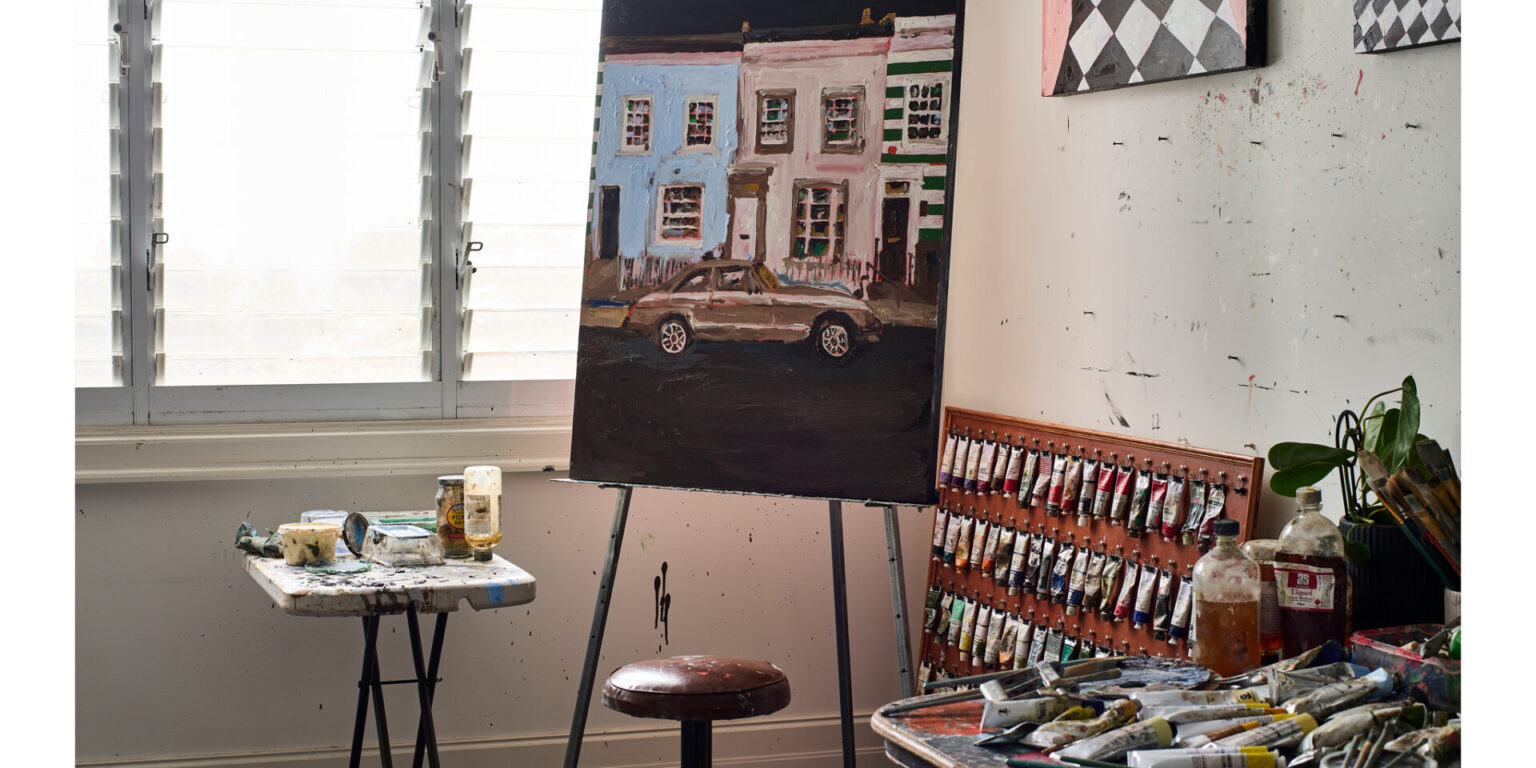
Could you tell us about your 2023 and 2024 National Emerging Art Prize (NEAP) experiences?
This is where it all began for me, outside the institutional framework of art school. I entered the National Emerging Art Prize on the recommendation of one of my lecturers at Adelaide Central School of Art, and becoming a finalist was a huge and wonderful shock. Attending the opening event in Sydney was a true privilege, where I met many other emerging artists and curators – connections that have since blossomed into cherished friendships. The shortlisting also led to a feature article in Belle magazine, which I still can’t quite believe happened, and it opened a conversation with Michael Reid Southern Highlands, where I held my first interstate solo exhibition last year. Being a two-time finalist has greatly increased my confidence in my painting and my ability to engage with the arts industry professionally. I couldn’t recommend entering the NEAP more highly to other emerging artists.
Could you tell us a bit about the bodies of work you have previously exhibited with Michael Reid Southern Highlands and Michael Reid Northern Beaches?
Exhibiting with Michael Reid Southern Highlands and Michael Reid Northern Beaches has been a rich and evolutionary experience that helped me find my voice as a painter. In 2024, I worked with the wonderful curator Amber Creswell Bell after presenting a body of work focused on doorways and buildings around Notting Hill and Edinburgh in the UK. From there, Amber encouraged me to challenge myself by considering new compositional frameworks within my practice. This dialogue inspired me to pivot towards my vintage car series and interior series, which culminated in a sell-out exhibition this year on the Northern Beaches.
What has since emerged is a dual narrative within my work that continues to bear fruit in multiple directions – an exciting and rewarding place to be as a painter. It also fuels my desire to draw on my travels for fresh compositional material and inspiration. I am writing this now from a self-directed residency in Manchester, where just outside my accommodation lies a mess of settings and scenery waiting to be photographed and painted.
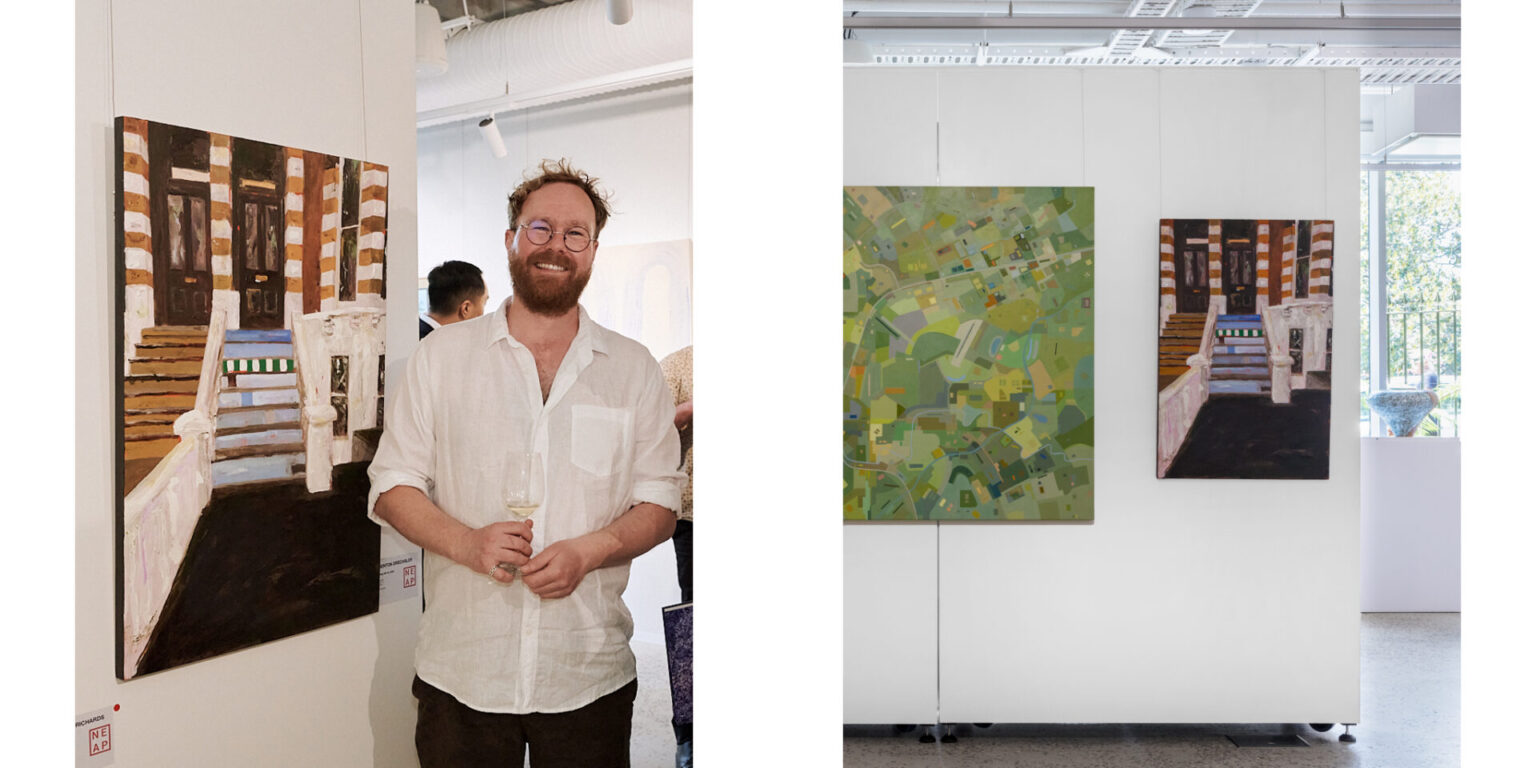
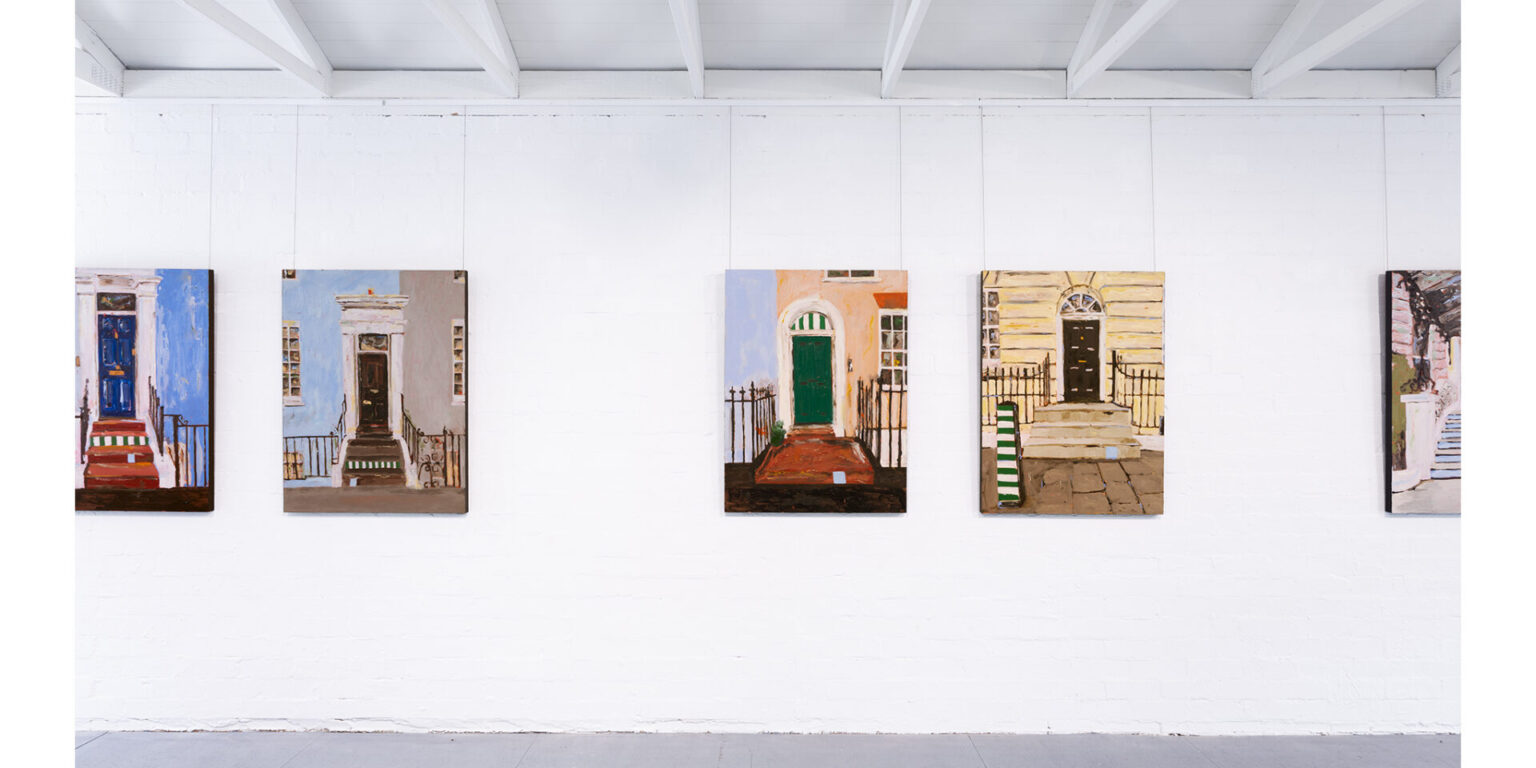
What are some of the ideas, inspirations and experiences that have informed your more recent work?
I seek out compositions that connect to my personal narrative as a queer person – whether through intimate depictions of interiors, vintage cars in foreign places that recall my childhood fascination with Matchbox cars, or landscapes that reflect my real and imagined heritage, both English and German. As a queer person, I have often struggled to fit into Australian heteronormative society, so when I paint, I feel as though I am embedding myself into each painted environment, with a renewed sense of belonging. This is also why I include a green and white stripe in every painting: it is my way of saying, “I was here. I exist. This is who I am”.
What was the starting point for the body of work now accompanying your representation announcement?
The works were born from my desire to experiment with a Neapolitan colour palette. When I travel through the UK and parts of Europe, I am often struck by the beauty of the architecture but also by the drabness or economy of its colour schemes – especially in the UK. This led to a desire to subvert and reimagine these painterly buildings, injecting colour and liveliness into each setting.
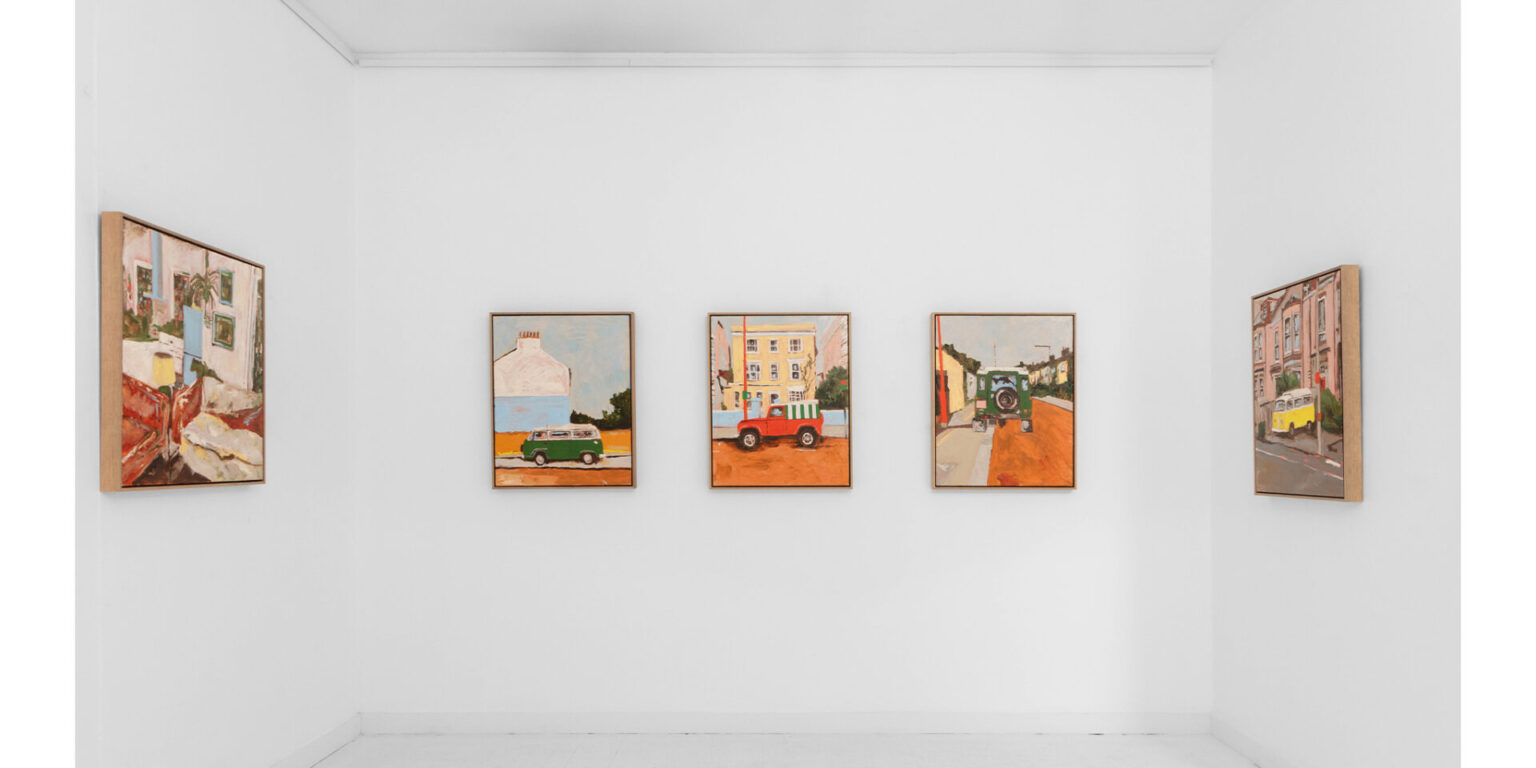
“I call [it] my Neapolitan Series – it is about lightening up, embracing optimism for the future, and letting go of the past, with grief and self-deprecation. Like many artists, I can be highly self-critical, and these paintings emerged from an internal dialogue that reminds me: Enough with the grief – have some fun.”
BRENTON DRECHSLER
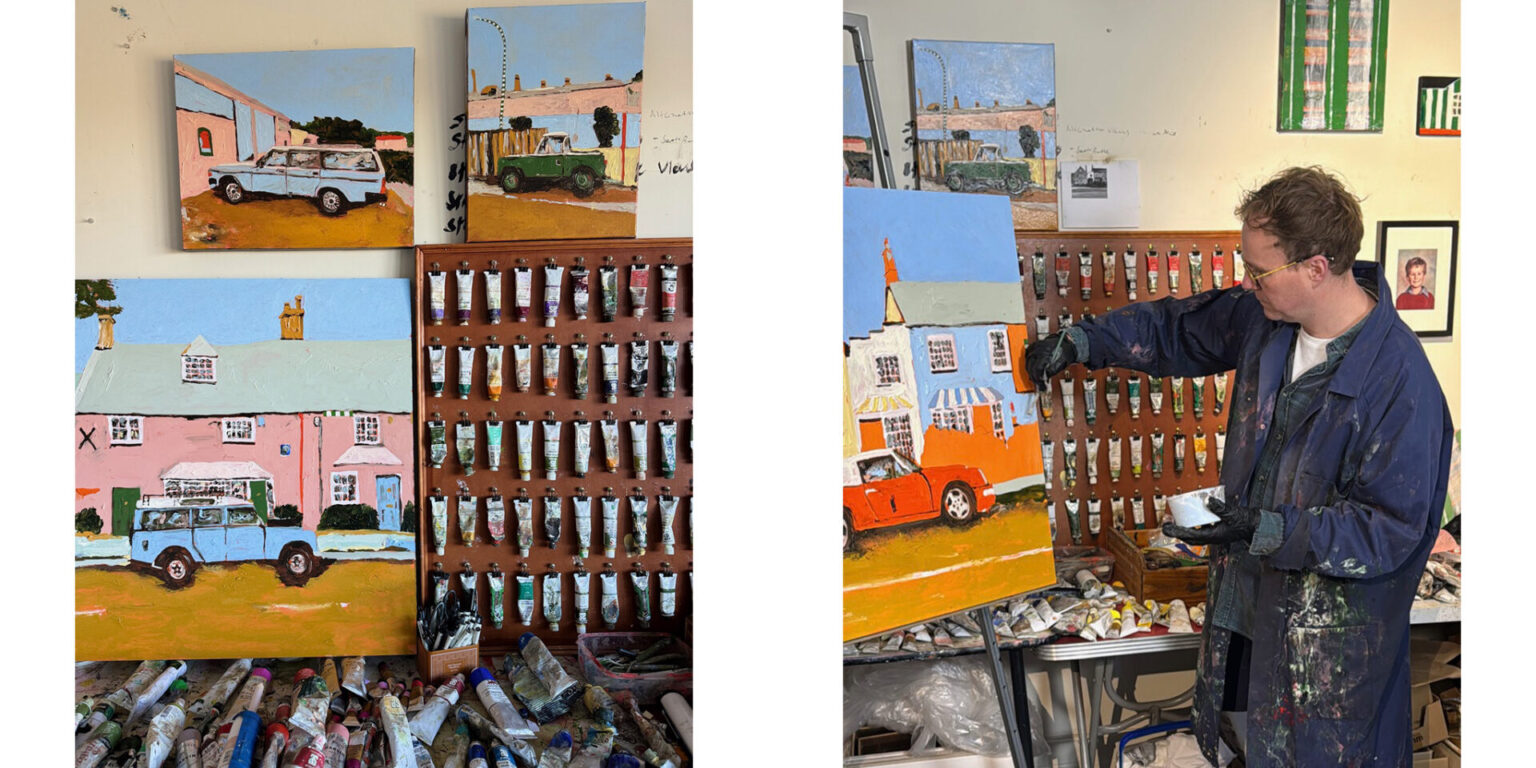
What other projects are you looking forward to in the coming months?
A very exciting development in my practice this year is being curated into the Painting Now exhibition, held at Michael Reid’s flagship space in Chippendale. The curator, Dean Andersen, has generously encouraged me to adopt a more cinematic and expansive approach to my painting practice. One invaluable reference Dean offered was the filmography of Wes Anderson, prompting me to consider what additional layers of narrative and atmosphere could unfold within my work. His encouragement to think beyond the boundaries of my existing framework has led to the creation of a bold, expanded body of paintings – my most adventurous work yet. I am eagerly looking forward to seeing these works on the walls, presented alongside other esteemed and talented painters. After my current self-directed residency in the UK and parts of Europe, I will return to the studio and get started on works for a solo exhibition in the Northern Beaches in 2026. There is so much to look forward to.
